Music is the universal language
“Glory to God in the highest heaven, and on earth peace to those on whom his favor rests.” - Luke 2:14
Premier Guitar
The BIGGEST Metal Pedalboards We've Covered | Rig Rundown BEST-OF
Step into the world of colossal, meticulously crafted pedalboards that power some of the heaviest, most creative guitar tones in modern music.
In this Best Of compilation, we revisit our biggest, wildest, and most intricate metal rig rundowns to date, featuring Matt Pike (Sleep), John Baizley & Gina Gleason (Baroness), Page Hamilton (Helmet), Erik Bickerstaffe (Loathe), Will Swan (Dance Gavin Dance), Sunn O))), Reba Meyers (Code Orange), and Will Putney (END).
From boutique one-offs to vintage rarities, from precision routing to total chaos, these pedalboards redefine what’s possible in heavy guitar tone.
Thanks to our sponsor, D'Addario!
Noel Gallagher’s Iconic Live ’25 Les Paul
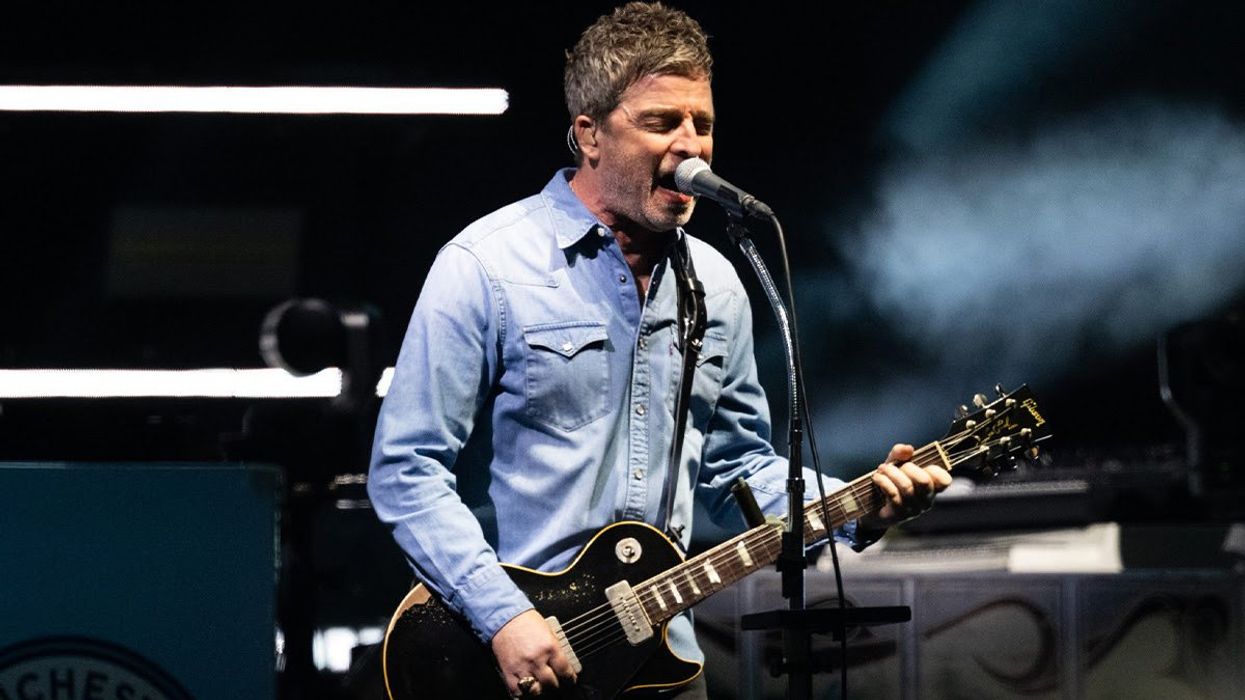
Exclusive: Full details of the black Gibson Les Paul Standard seen and heard at Oasis reunion shows
What’s the story behind Noel Gallagher’s Live ’25 Les Paul?
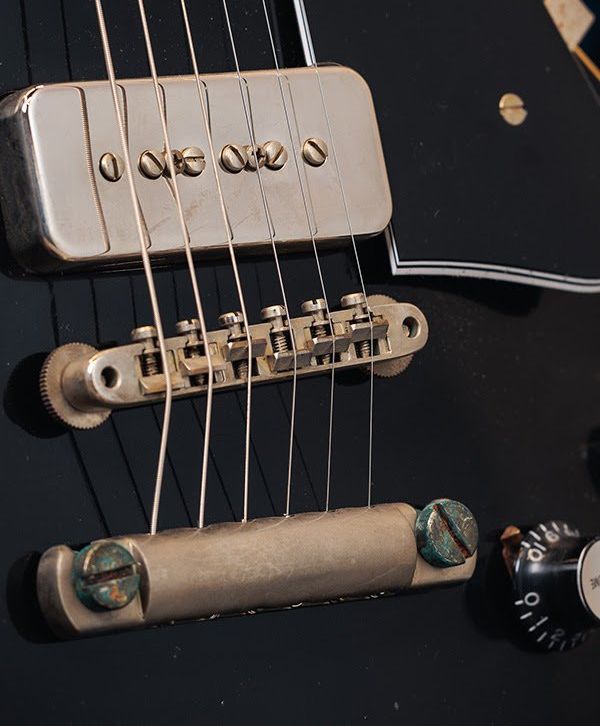
It was the moment every Oasis fan had been waiting for since the biggest reunion tour in British music history was announced last summer. July 4th saw Oasis take to the stage at the Principality Stadium in Cardiff for their first appearance on stage together since 2009, blowing away the cobwebs in emphatic fashion with a hit-packed set.
The Live ’25 tour continued in Manchester and now London, generating rave reviews from music fans and media alike. Thanks in no small part to the three-guitar wall of sound architected by Noel Gallagher, Gem Archer, and Paul “Bonehead” Arthurs, Oasis are on fire and sounding bigger than ever. But eagle-eyed guitarists in the audience have been quick to notice that one of Noel Gallagher’s main instruments for the reunion shows is a mysterious black Gibson Les Paul™ with P-90 pickups, which appears to be new to his collection.
Online speculation has been rife, so we spoke to Lee Bartram, the Head of Commercial, Marketing & Cultural Influence at Gibson EMEA, to bust a few myths and get the inside scoop on the design process behind Noel Gallagher’s new Les Paul.
Gibson and Epiphone have worked with Noel on several instruments over the years. What’s the story behind the black Les Paul, and did Noel always have it in mind for the reunion shows?
“We have been working on this guitar for at least 18 months. It really came from a conversation around creating a Les Paul that would accommodate P-90s (which Noel was playing a lot with NGHFB at the time, favoring Epiphone USA Casinos) at high volumes, without compromising on the sound and tone of the pickup.
“Aesthetically, Noel had an idea of what he wanted it to look like, and we tried out a few hardware, finish, and color options before landing where we did. Obviously, at the time of initial designs, I had no idea what the guitar was intended to be used for. But, as development continued, it was important to create a guitar that would give different sonic layers to a lineup of three guitarists playing to stadium-level attendances. The guitar needed to be loud and capture the vibe of those earlier shows, without compromising the output and tone of the pickups.”
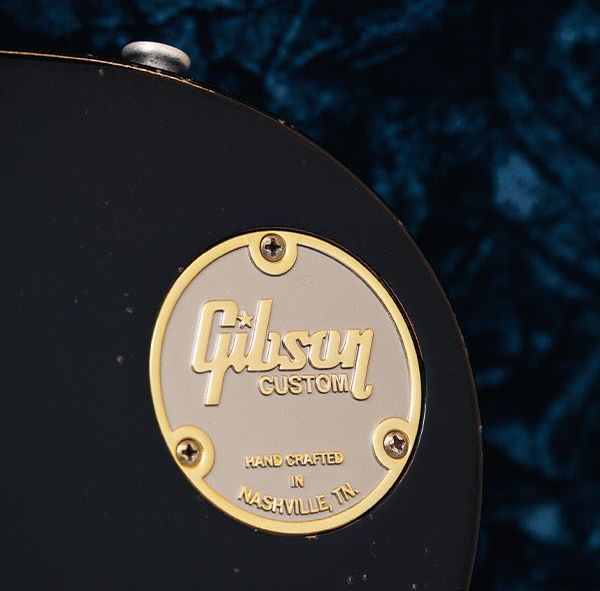
What are the main specifications?
“The guitar is based on a 1960 Les Paul Standard, but with the humbuckers swapped out for P-90s, so it’s a great hybrid model. The SlimTaper™ neck profile is as per the artist’s preference, as are the Grover® tuners, which are present on all the Gibson models Noel plays. It’s got a maple top on a mahogany body, with the Ebony finish being Light Aged through the Murphy Lab in Nashville. Everything we build for Noel starts out as Light Aging, and he will then decide after playing it if he wants to add more aging or keep it as it is, knowing it’s more straightforward to increase the aging levels than decrease them. In this case, he wanted more on the body, neck, and back, which looks great on stage.”
Are the pickups and wiring stock? Or is there anything extra going on under the hood?
“The pickups are Gibson Custom P-90s as stock. Noel wanted to capture a very traditional P-90 sound with these, so there is no additional wiring. Noel has a great understanding of what he wants from a pickup and gives relevant feedback—excuse the pun! He knows that Gibson invented the P-90, and we didn’t want to mess with a winning formula. Having aged nickel covers on the pickups is relatively unique, however, and something the Gibson Custom Shop spent a lot of time getting right. The results look great and the pickups sound amazing at volume… mission accomplished!”
Presumably, it’s been a buzz to be involved in this project?
“Not knowing originally where that guitar was going to end up, it’s been quite emotional to see it being used during the biggest reunion tour ever. We’ve received amazing feedback on the guitar, and I think it’s safe to say it has become the talk of the town every time it is used—I’ve had so many people reach out wanting to know what it is and if we can build one for them.
“It’s great to see that people are just as passionate about guitar as ever before. For this guitar to be part of such a monumental musical event is a thrill, and knowing it was designed specifically for it makes it even better. The first time people saw the band together in 16 years was with a guitar that Gibson designed and built directly with the artist. That’s pretty cool.”
Visit the official Oasis website for Live ’25 ticket updates, shop the Epiphone Noel Gallagher Riviera, and watch the Noel Gallagher “Icons” episode on Gibson TV.
D'Angelico is Proud to Introduce the Excel 16
Stemming from the deepest roots of the brand's rich history, D'Angelico is proud to introduce the Excel 16—an all-new 16-inch-wide archtop offering undeniably punchy, woody and sweet tone that immediately recalls classic New York City jazz.
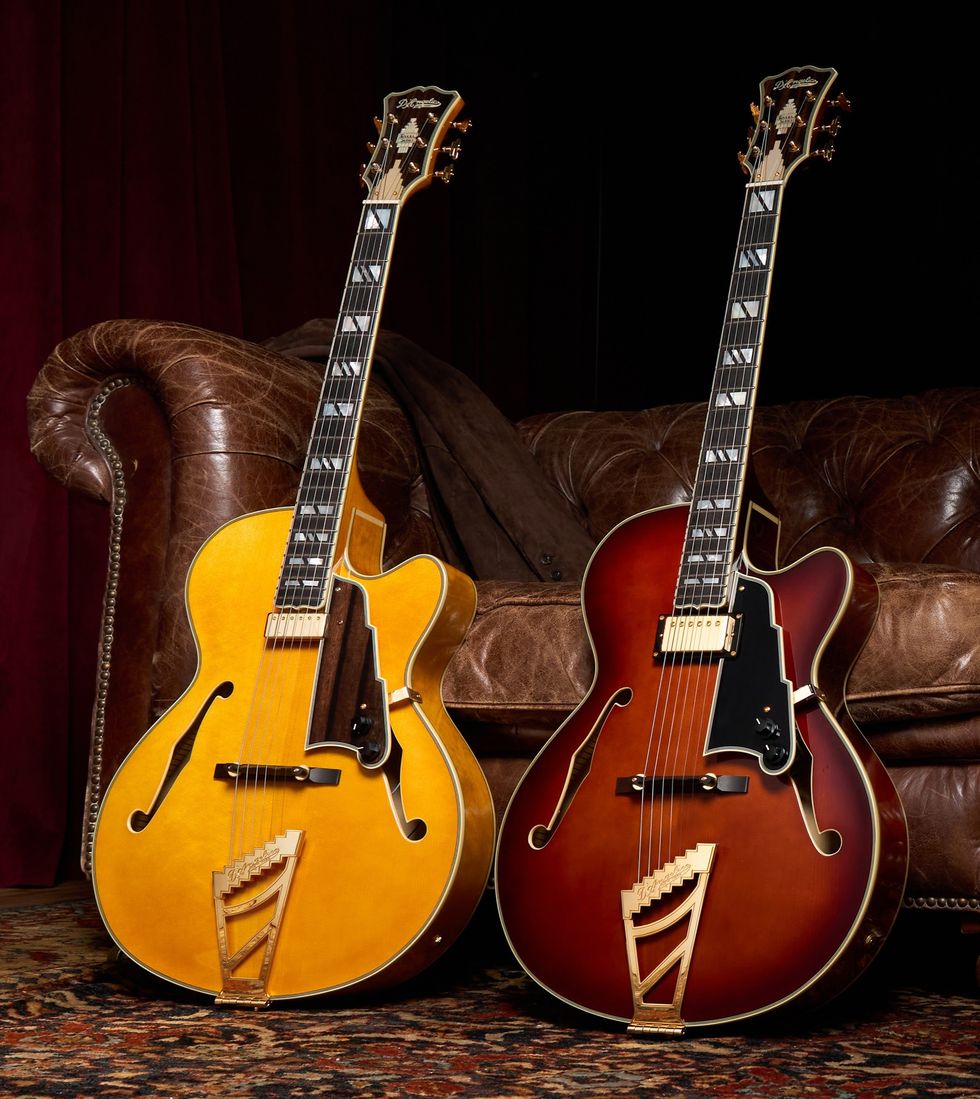
A happy medium for traditional jazz players looking for an instrument that is easier to wield than its larger counterparts, the Excel 16 has a slightly shallower body depth at 2.75" but still yields all the full-bodied warmth one desires from an archtop. A 12-inch fingerboard radius and slightly thicker C-shape neck create remarkable comfort—equal parts hefty and fast-playing. The Excel 16's acoustic resonance is complemented by either a Seymour Duncan Johnny Smith Floating Mini Humbucker that maximizes top sustain or a Seymour Duncan '59 Humbucker, for those in pursuit of bold and balanced tones that can more easily cut through in a larger band setting. Available in Amber and Amaretto Burst.
D'Angelico Excel 16 Hollowbody Electric Guitar - Amber
Excel 16 HB, Amber
Spurr Audio Announces the PMF-8824: A Personal Multi-FX Modulator
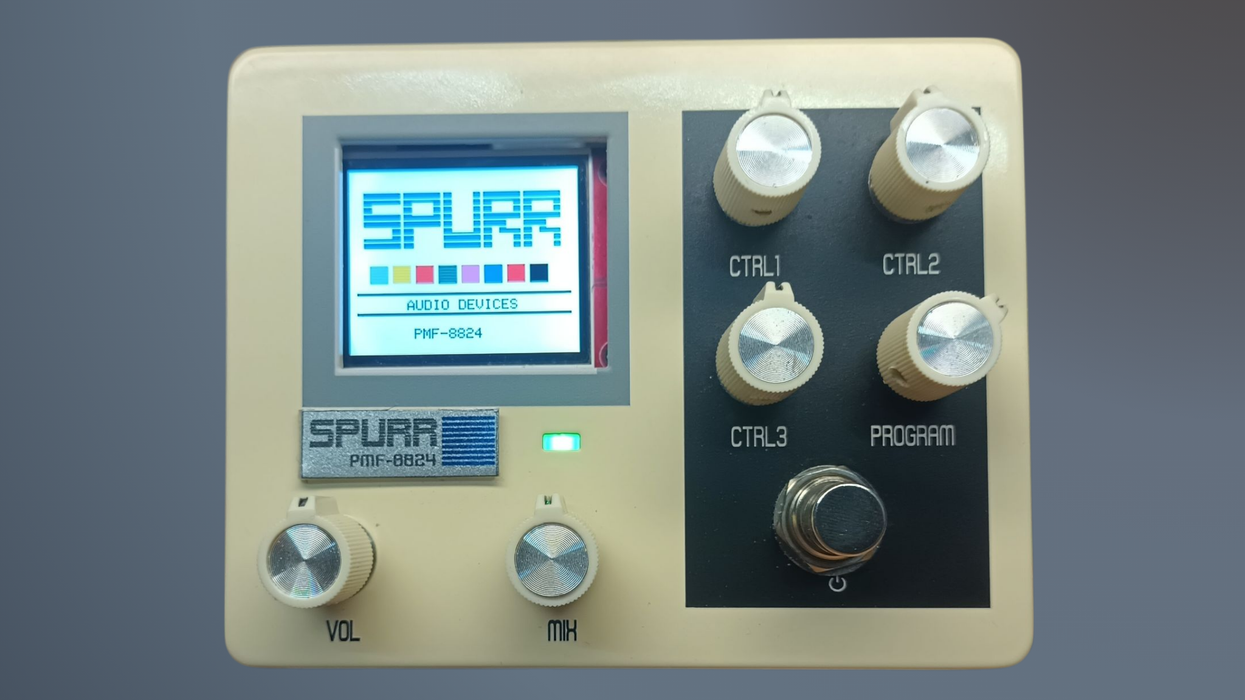
Spurr Audio has introduced the PMF-8824, a compact multi-modulation pedal that fuses vintage digital aesthetics with modern DSP-based creativity. Inspired by the design philosophy of early 1980s personal computers, the PMF-8824 is equal parts nostalgic and futuristic, offering players a unique toolset for creating modulated textures and unconventional tones.
The PMF-8824 features eight custom-designed effects, ranging from classic time-based modulation to more experimental sound-shaping tools. Each program has its own dedicated screen layout, complete with visual feedback and real-time control over three contextual parameters (Ctrl 1–3). Two additional knobs control Mix and Volume, while a Program selector knob cycles through effects. All visuals are displayed on a retro-inspired pixel screen that responds to user interaction.
Though the unit is mono, each effect is crafted to feel immersive, using stereo-style modulation, spatial tricks, and reverb-like environments to expand the perceived soundstage.
Included Effects:
- Phaser – Smooth 4-stage phasing with musical feedback
- Tremolo – Rich amplitude modulation with waveform selection
- Flanger – Dense and metallic swirl with resonant feedback
- Vibrato – Tape-style pitch wobble with internal ambiance
- Chorus – Wide 4-voice chorus with built-in reverb option
- Rotary Simulator – Spinning speaker with mic and cabinet control
- VCR (VHS Lo-Fi) – Warped, nostalgic tape textures with saturation
- Microchoir – Digital choir inspired by classic organ voicing
The PMF-8824 stands out not only for its sounds, but also its interface and visual identity. The pedal’s housing and GUI are modeled after personal computer aesthetics—pixel fonts, windowed layouts, and real-time visual meters give each effect its own interactive “page.” The display changes dynamically depending on the selected effect, ensuring clarity and a user-friendly experience.
The PMF-8824 is now available for pre-order for a street price of $219. For more information visit spurraudio.mitiendanube.com.Sheptone Pickups Revives Coveted AB Custom Humbuckers
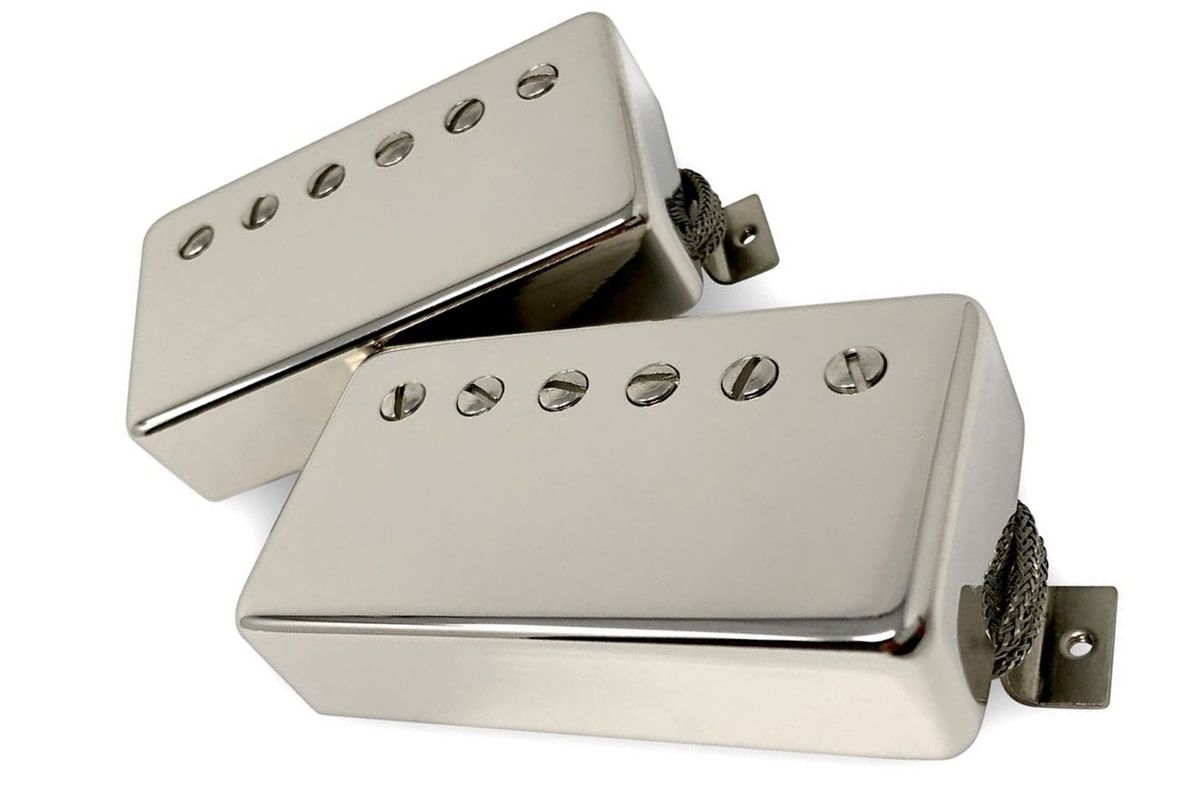
Sheptone announces the reissue of its coveted AB Custom humbuckers. Revered by tone chasers, professional touring musicians, and collectors alike, the AB Custom humbuckers return with all the hallmarks that made it a modern classic—and more.
Built entirely by hand, one at a time, by long-time industry figure and proprietor Josh Vittek, each Sheptone pickup reflects a relentless commitment to tone, authenticity, and craftsmanship. The AB Custom humbuckers are no exception, offering unmatched responsiveness, musical articulation, and the nuanced dynamic range players have come to expect from Sheptone. As the first variation on the original Sheptone Tribute set that launched the business back in 2007, these are considered a medium output PAF-style humbucker providing that little extra push that guitar players just love.
Featuring proprietary butyrate bobbins, 42 AWG plain enamel wire, rough cast Alnico 5 magnets, a maple wood spacer, and nickel silver baseplates, the AB Custom humbuckers are built with period-correct components and the highest-quality materials available. Measuring an average of 8.5k in the bridge and 8.0k in the neck, each set delivers vintage-inspired clarity, warmth, and punch making them a top choice for players seeking the elusive "magic" found in the most iconic recordings.
Customers can choose from double black, zebra, reverse zebra, or covered configurations with nickel or gold-plated period correct nickel steel covers, offering aesthetic versatility without compromising tone. The AB Custom humbuckers are a premium choice for discerning players who demand the best—whether in the studio, on stage, or in their personal woodshed.
Sheptone pickups have long been the secret weapon behind some of todays most beloved tones. With the return of the AB Custom, that legacy continues—one note at a time.
To learn more or to order, visit www.sheptone.com
Prices start at $818.00 USD per set.
Introducing the Inspired by Gibson Custom Acoustics

Epiphone's collaboration with the artisans at Gibson Custom just got a major acoustic upgrade! We’re excited to share new acoustic additions to the core lineup, updated with features that make these guitars better than ever.
With new Vintage Gloss and Full Gloss finishes, rosewood or ebony fretboards, thermally aged tops, loads of vintage-correct details, historically accurate Gibson “open book” headstocks, and historic-inspired cases, these guitars bring Custom Shop quality to players everywhere at accessible prices.
1942 Banner J-45 Reissue
This exceptional acoustic guitar has a thermally aged, solid Sitka spruce top that is reinforced with scalloped X-bracing and paired with a solid mahogany back and sides for the rich, balanced tone that has made the J-45 a longtime player favorite.

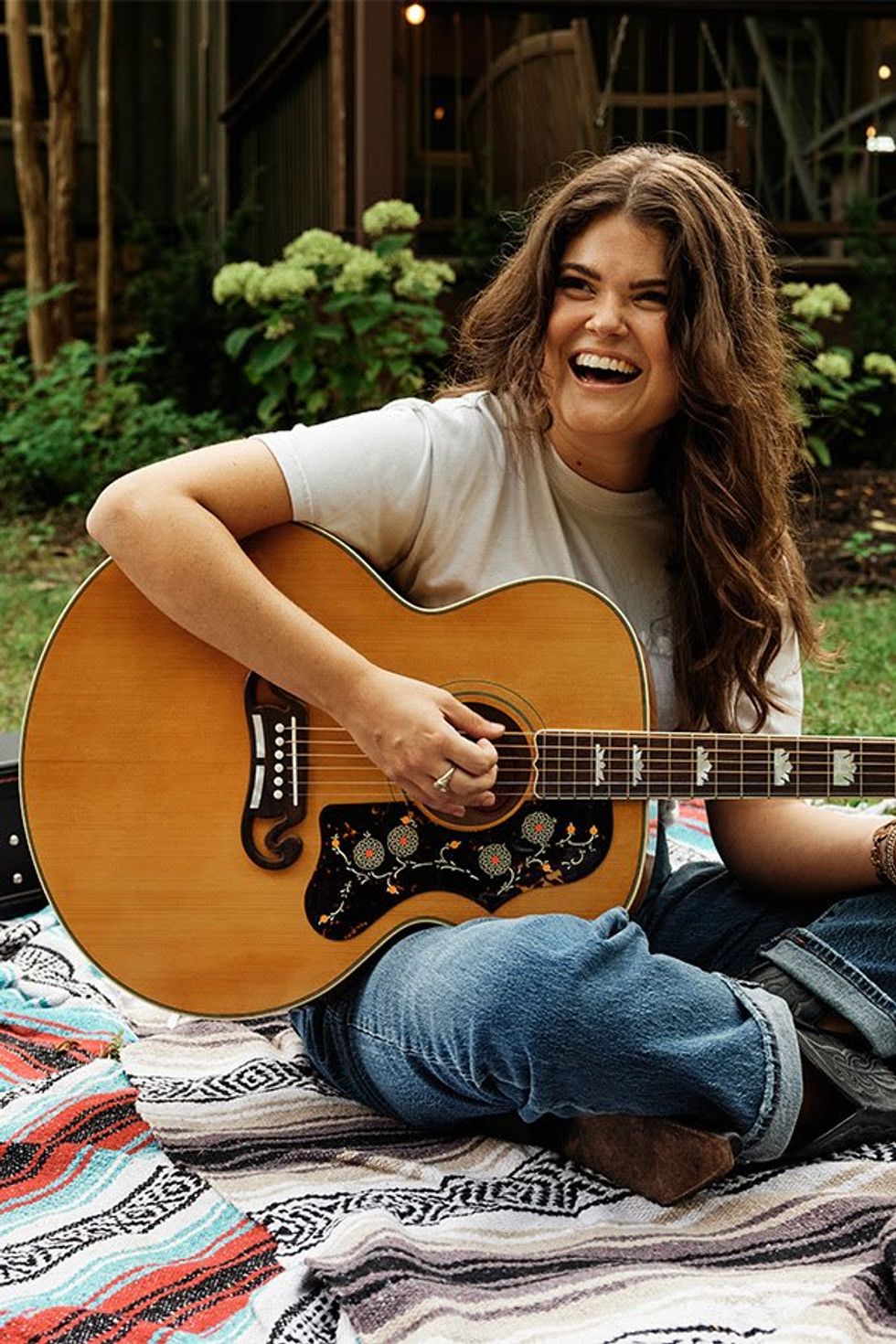
1957 SJ-200 Reissue
Meet the Epiphone 1957 SJ-200 Reissue, an Inspired by Gibson Custom recreation of a rare vintage icon. It features a solid figured maple back and sides, a thermally aged solid Sitka spruce top with traditional scalloped X-bracing, and a two-piece flame maple neck.
Hummingbird Deluxe EC
The Hummingbird Deluxe EC has been upgraded and modernized with beautiful, solid rosewood used for the back and sides, giving this guitar the full and rich sound of the traditional Hummingbird, along with the added tonal nuances of rosewood, resulting in a deeper bass and even more sparkling overtones in the highs.

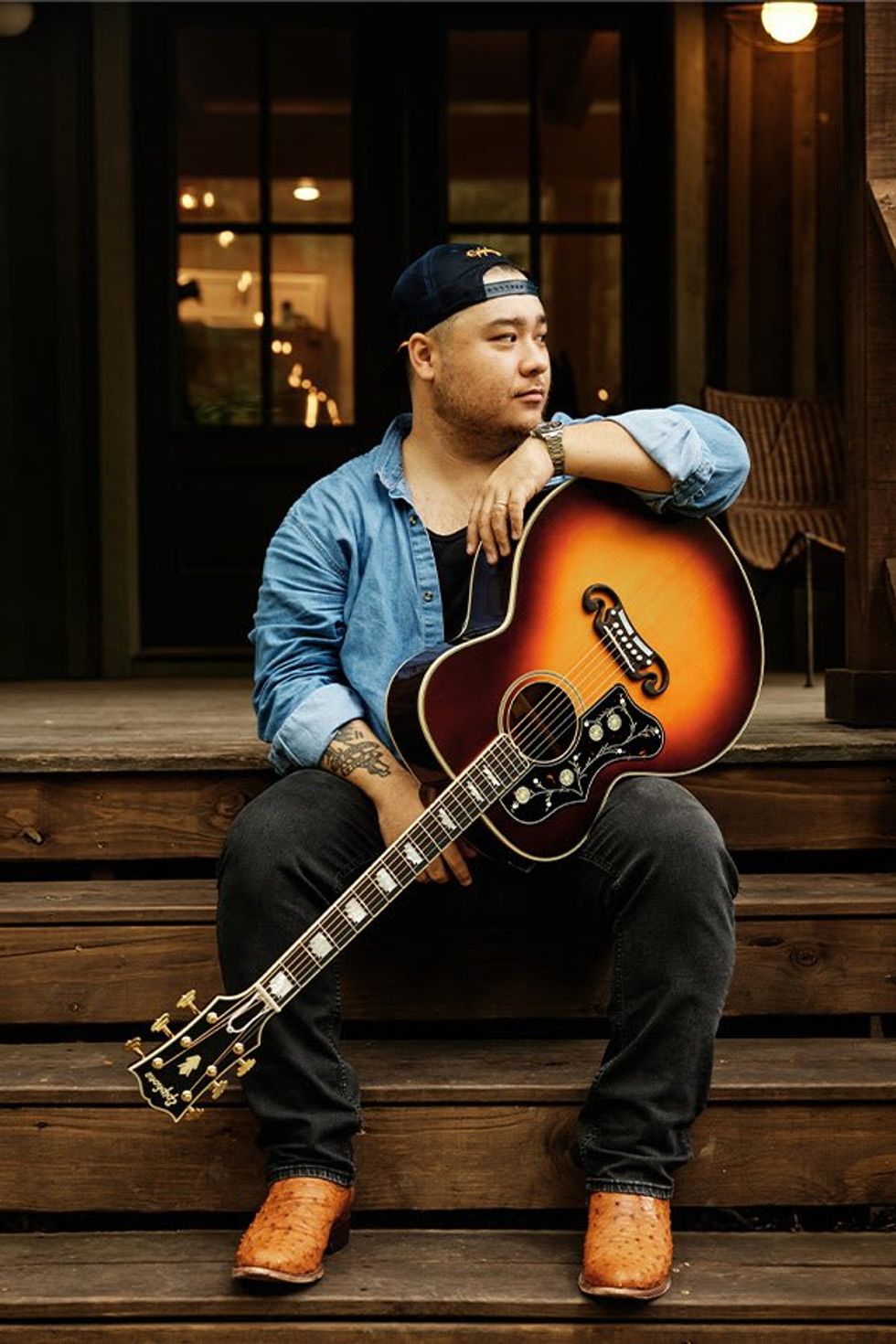
Pre-War SJ-200 Rosewood Reissue
The Epiphone Pre-War SJ-200 Rosewood Reissue is replete with vintage-inspired details, including a solid rosewood back and sides, a thermally aged solid Sitka spruce top with traditional scalloped X-bracing made from quarter-sawn solid spruce, and more.
1963 Dove Reissue
The back and sides of the 1963 Dove Reissue are made from solid, figured maple. It delivers a bright, clear tone from the maple body, as you might expect, but it also has a bit more bass than a Hummingbird and a very balanced tone overall that works exceptionally well in a wide range of musical genres.

Feelings vs. Physics: What Matters Most for Electric Guitar Tone?
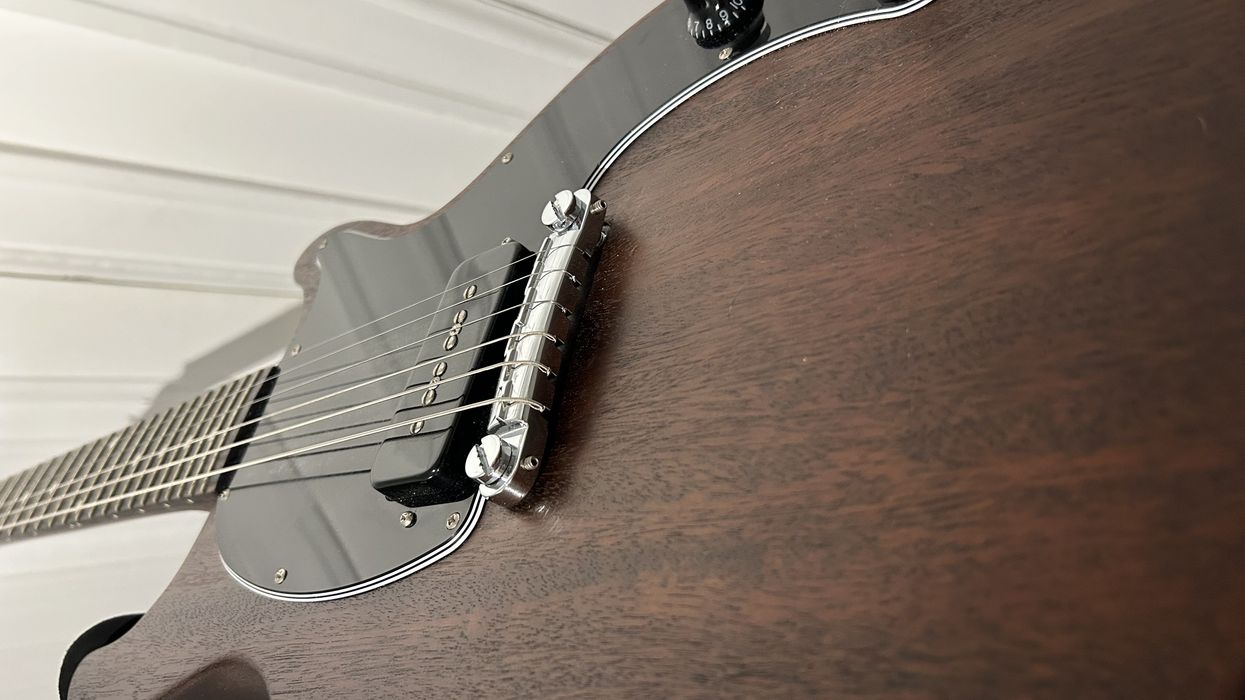
Hello, and welcome back to Mod Garage. After we had a general look at electric guitar “tonewood” last month, we will pick up where we left off to see how important wood is for the sound of an electric guitar, and if everything you can hear when playing it unplugged is present in its amplified tone.
I already spoiled the answer in the last part by saying that it’s not the most important factor, and that the correct question to ask is, “How much of what is audible in the unplugged, or primary, sound will be present in the amplified tone?” To be clear, I didn’t say that the wood has no influence on the electrified tone, and that all electric guitars sound the same. To cut to the chase, here is my formula on this, based on proven physics as well as several decades of expertise: The more solidly an electric guitar is built, the less influence its structure has on the amplified tone. We can invert this thinking, too: The more an electric guitar has the qualities of an acoustic guitar, the greater the influence its primary structure will have through an amp.
This is not my original wisdom, but is based on decades of intensive scientific research by Professor Manfred Zollner from the German Regensburg University, which mostly matches my experiences from many years in the business. Professor Zollner developed this headnote approximately 15 years ago, and in my opinion, it’s the closest thing to the truth. His actual theory is that the wooden structure of an electric guitar has close to zero influence on the electrified tone.
Let’s form a few groups according to different construction methods, which can give us some basic guidelines.
Group No. 1: Electric guitars with a set neck and no tremolo
This is the most solidly built family, with guitars like the Gibson Les Paul, SG, LP Junior, etc. and their offshoots from other companies, but also guitars like the PRS McCarty family. Brace yourself: On these guitars, the primary structure has almost no influence on the amplified tone. Yes, mahogany is lightweight, and a flamed maple top looks stunning, but these qualities don’t impact how they sound through a Marshall stack.
Group No. 2: Electric guitars with a set neck and tremolo
The next most densely constructed guitars include the Gibson Les Paul Axcess and Firebird, the Gretsch Jet, the PRS Custom and Standard family, a lot of Ibanez guitars, etc. Here, the body mass does a bit more to the tone; later, we will discover why this is.
Group No. 3: Electric guitars with a bolt-on neck and no tremolo
Here, we have the grandfathers of all electric guitars: the Fender Telecaster and Esquire, but also hardtail Stratocaster models along with the Mustang and Duo Sonic, PRS’ NF53, and many more.
Group No. 4: Electric guitars with a bolt-on neck and tremolo
The classic Fender Stratocaster comes to mind, along with the Jaguar and Jazzmaster, the PRS CE family, and a lot of Gretsch guitars.
Group No. 5: Semi-hollowbody and chambered electric guitars
This collection includes instruments from the first group that lean more towards the construction of an acoustic guitar, with guitars like the Gibson ES-335, Gretsch and PRS semi-hollowbody models, the Fender Thinline Telecaster, Coronado, and Starcaster, and countless other models. Applying the guidelines from above, we also have to differentiate based on set versus bolt-on neck, as well as inclusion of tremolo.
Group No. 6: Hollowbody electric guitars
In this last section, we have the “big boys” that are usually referred to as jazz guitars or archtops, like the Gibson Byrdland, Super 400, L5, the Epiphone Broadway, Ibanez George Benson, etc. These are more or less acoustic guitars with pickups, and compared to all the other categories, their primary construction has the most significant effect on the amplified tone.
So far, I bet a lot of you will be cursing my name. I know that playing and expressing oneself with the guitar are highly emotional things, and I’m not taking exception with this. But you can’t bargain with the hard facts of physics—if you drop a glass of wine, it will hit the floor, not the ceiling, at least on Earth.
Let me explain. First and foremost, woods are for stability, surface feel, and optical appearance on electric guitars. They create a certain feeling, but don’t really change the instrument’s electrified tone. This is the point where we are all humans with emotions, prone to psychoacoustics, conclusions by analogy, and of course, confirmation bias. We see a guitar with a bright maple neck, so we expect a bright tone. We have a dark rosewood or ebony fretboard, so we expect a dark tone. You get the idea.
You all know the saying that the tone is in the fingers, and this hits the nail on the head for electric guitars. The tonal influence of the individual playing style of each guitarist is much more powerful than the subtle differences of wood selection. Playing style is also never perfectly consistent, no matter if you are a beginner or pro player. It’s close to impossible to exactly reproduce picking strength, location, and velocity, and these things alone create much more tonal difference than the wood with which a guitar is built.
Here’s a story to illustrate the point; you may have heard it before. German guitarist Paul Vincent, who passed in 2016, was one of the best guitar players worldwide, and the studio guitarist for Freddie Mercury during his solo phase without Queen. You can hear his playing on Mercury’s Mr. Bad Guy on hits like “Living On My Own” and “I Was Born to Love You.” These hits were recorded in the Musicland Studios in Munich, Vincent’s hometown. In his Rock Guitar Book from 1993, he describes meeting Brian May at Musicland in 1985 during the recording of the Queen single “One Vision.” After Brian finished his overdub, he walked out of the studio to greet Paul, handed his Red Special guitar over to him, and said, “Go ahead, play a little for me, I want to see your left hand vibrato.” Paul was speechless and totally blindsided, but also full of curiosity and respect. He was holding the original Red Special in his hands, plugged into the famous Deacy Amp and everything else May was using in the studio. But when he started playing, he simply sounded like Paul Vincent, and not even close to Brian May, even when hitting some famous Queen licks and riffs.
I think that says it all. Vincent was looking for an escape hatch from this situation, so he handed Red Special back to May, telling him that studio time is expensive and he didn’t want to take up his afternoon. May smiled at him and said, “You are an outstanding player, Paul.”
With that settled, next month, we will start to work on our cheap budget guitar, parsing out what really influences the amplified tone of an electric guitar, step-by-step, so stay tuned!
Until then ... keep on modding!
Robert Keeley: From Homemade Mods to Pedal Powerhouse
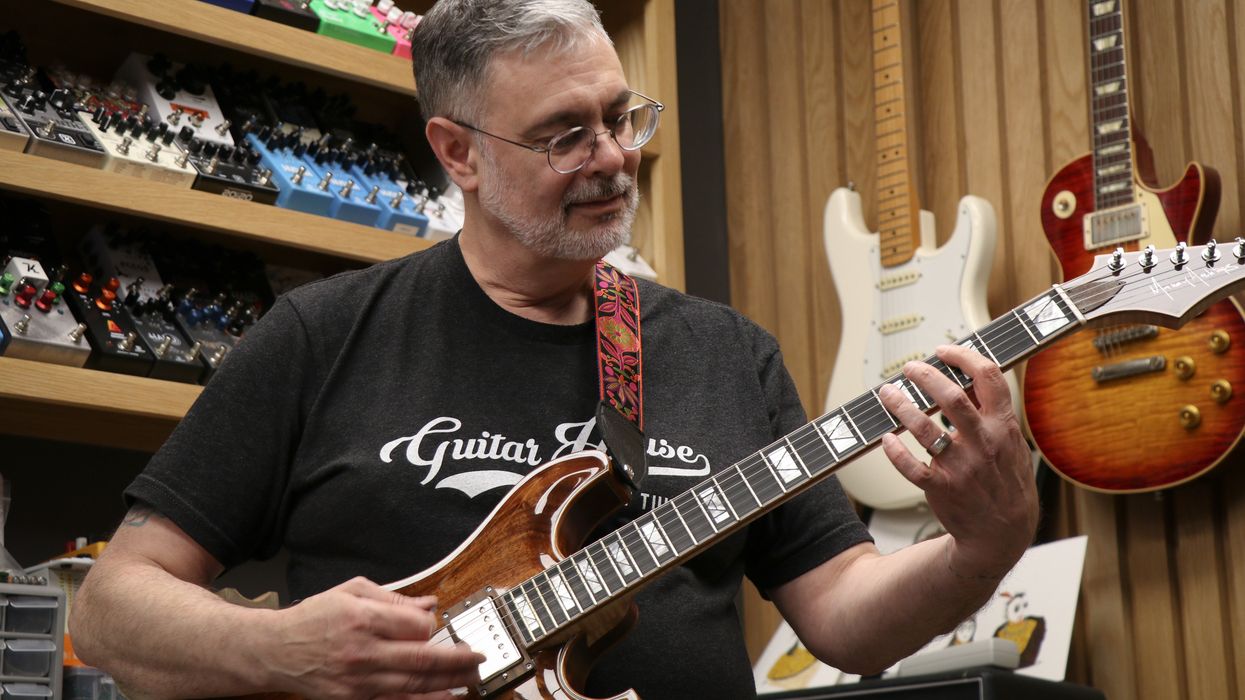
Long before boutique pedals took over the world, Robert Keeley was there. Growing up in a musical family with a long line of electrical engineers sparked a circuit-bending obsession with tone. It wasn’t long before young Keeley was modding existing pedals, adding switching options inspired by high-end car audio equipment. This unique approach laid the groundwork for what would become one of the most respected brands in guitar effects: Keeley Electronics.
Starting with celebrated platforms like the Boss Blues Driver and Ross Compressor, Keeley’s early mods—namely, the Super Phat Mod overdrive and his flagship Keeley Compressor—became icons. Nearly 25 years ago, his overdrive and compressor were seemingly everywhere, overnight. Even guitar royalty got in on the action.
“It didn’t take very long,” Keeley admits, explaining the ignition of his initial overdrive box. “One time, Dave Weiner [former Steve Vai rhythm guitarist] said, ‘Steve has some DS-1s he wants you to mod.’ I said, ‘Send them my way!’ I called it the Ultra Mod after his album, Alive in an Ultra World."
Unfortunately, success also brought challenges. For Keeley, the early years of the boutique boom were clouded by addiction, loss, and hard lessons that would sink most small builders. While competition was springing up everywhere, he was losing his marriage, his health, and his company’s momentum.
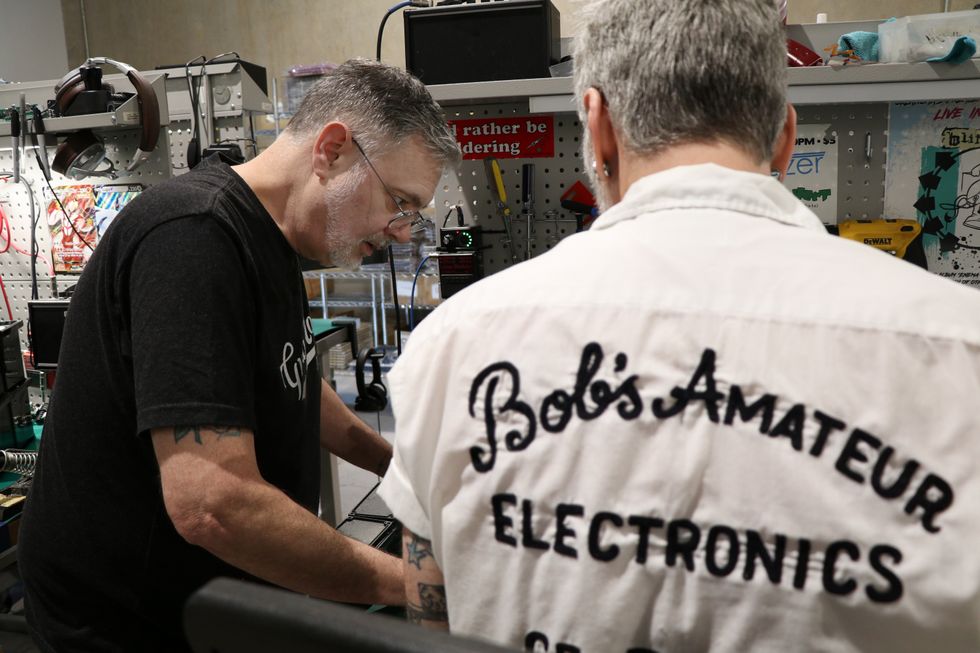
Yet if there’s one thing this story makes clear, it’s that Keeley refuses to go quietly. What emerged from the darkness wasn’t just a revitalized company; it was a new era. Today, Keeley Electronics, which employs 35 people, is an industry leader. And through it all, Robert Keeley’s joyful and passionate outlook still permeates everything he says and does.
In this conversation, Keeley opens up about surviving life’s boom and bust cycles, the freedom of keeping everything in-house, and how Phish’s Trey Anastasio inspired both his first compressor and most recent Manis overdrive.
Your compressor seemed like an overnight success. What was it like rocketing from “I want to try modding pedals” to suddenly being the Compressor Guy?
It was a whirlwind. I was working at a stereo store repairing high-end audio gear when I found out Trey Anastasio used a thing called a Ross Compressor. I looked on eBay, and they were $400 each. There was no way I could afford that, so I bought the parts and made it myself.
“I think pedals will be around for a very long time. They’re the quickest, cheapest way to get inspiration between your guitar and amp.”
I was following [guitar electronics guru] R.G. Keen’s articles about the Ross Compressor. He’d explain circuits and offer little tips, like when Ross improved the power supply with an extra capacitor and resistor. I’d think, “What if I make it even better? If I use stronger transistors and tweak the circuit, I’d get a better compression sound.” Once I heard it, I thought, “This is amazing.” I put one up on eBay to sell and used that sale to buy more parts.
Your pedal mods, like those on the Blues Driver, were also massive hits. What got you into working with pre-existing pedals?
Well, I also wanted to capture the sounds of the Tube Screamer Trey was using. And for me, it’s always been, “What if I [swap components], combine them, and solve some tone problems at the same time?” So I looked at all the complaints on Harmony Central—“not enough bass, tone control doesn’t work, needs more gain, needs less gain”—and made mods that solved most of those complaints.
I was also like, “Man, I could do some mods like I see on car stereos, where they have a little switch for a bass boost.” And that’s how I did it in the beginning.
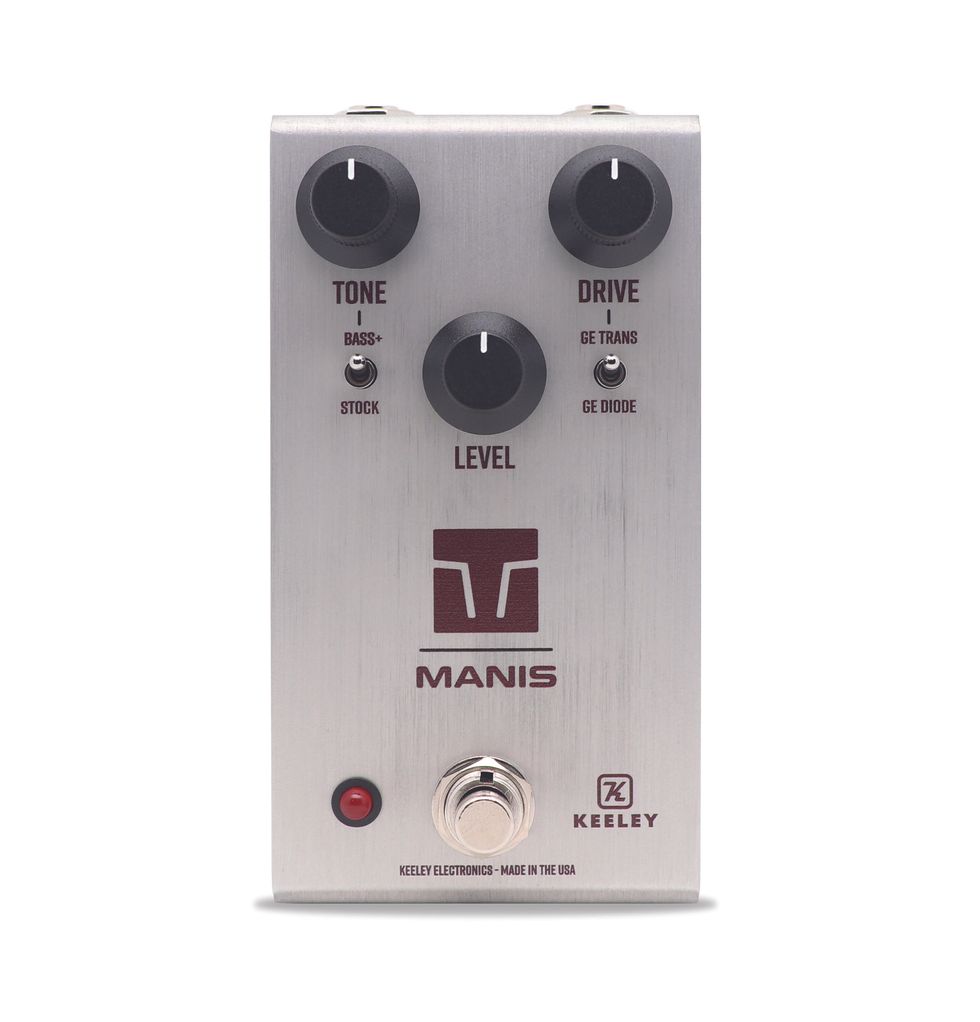
Those Blues Driver and Tube Screamer mods eventually became the Keeley Super Phat Mod and Red Dirt, but why did it take so long to release them as your own pedals?
I didn’t want to just copy something to make my own drives. I still had an ego. I didn’t want to just say, “Here’s my modded Tube Screamer.” But when you get in trouble with the IRS and have to pay $13,000 a month in alimony, you’ll do a lot for money, including putting out a pedal called the Red Dirt. [laughs]
I had to punch like a businessman. Besides, I couldn’t start a business with just one pedal, and people got tired of “the Compressor Guy.”
“Everyone told me, ‘Just declare bankruptcy.’ That was the last thing I was going to do.”
You’ve been very open about a lot of your early struggles. But while that can derail a lot of small businesses, you’ve always found a way to overcome. Why do you think that is?
I developed that during my divorce. I was so high on pills that I wasn’t paying taxes. My wife was embezzling $170,000 a year and not reporting it. Then she hired attorneys for an alimony case, so I had to pay back a quarter million to the IRS, and owed a million in alimony and child support.
Everyone told me, “Just declare bankruptcy.” That was the last thing I was going to do. When you’re dealt that kind of news—and won’t give up—you think, “I need to sell pedals by Friday to make payroll!” It was survival.
You definitely survived—and thrived. The 2000s through 2020 were huge years for pedal companies, and it seemed like every release you put out was a hit. What was that period like for you?
It was really fascinating because in those early years my sales doubled. It seemed like anything I made would sell itself. I was also bringing all the processes back in-house. My shop had burned in 2009, so all my cases were being drilled and powder-coated elsewhere, and then printed by another firm. I was bringing things back in-house and having to learn how to do everything again. But I get endless lucky breaks. [Keeley signature artist] Andy Timmons came on at the right time; that guy can move gear like nobody’s business. And we just got to the next level in our DSP.
“Trey Anastasio’s tech texted me and said, ‘It’s the perfect time to send Trey a bunch of your Klon ideas.’”
Speaking of DSP [digital signal processing], you’ve grown far beyond compressors. What led you down the digital path?
It’s the people around me. My wife’s son, Craighton [Hale, Keeley Electronics engineer], was going to school for electrical engineering, so we had an electronics-minded person working with me. And our longest-running employee, Aaron Tackett, got tired of CNC work. I said, “How would you like to learn programming and help me with DSP?” He said, “Yeah, okay, I’ll do that.” And my god, did he take after it!
I love setting people up for things. I’ve been fortunate to have enough business coming in to pay these people well while they learn. Then they become superstars.
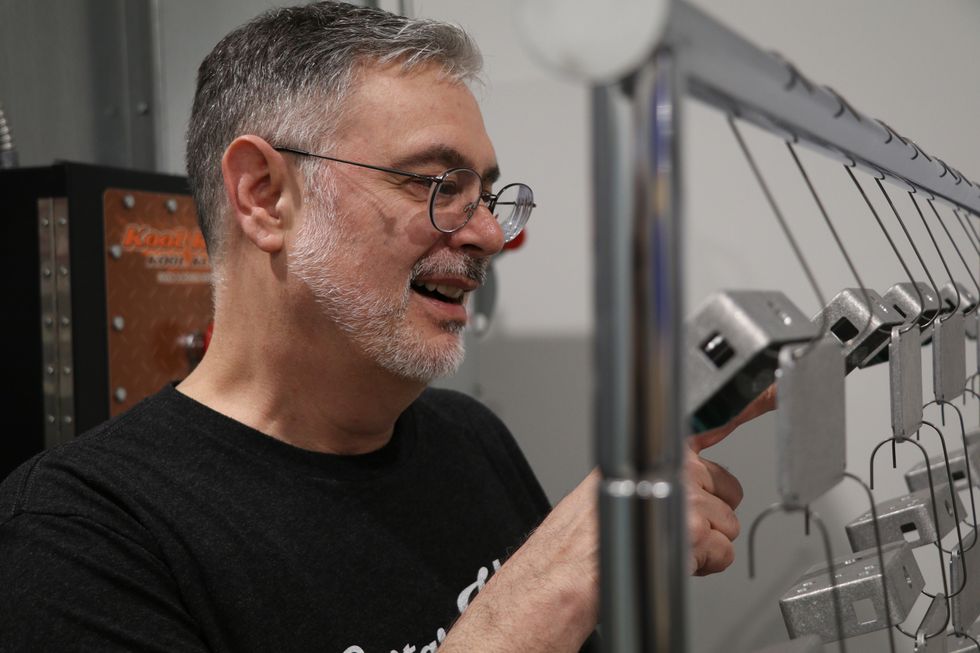
You share the spotlight with your team, have someone cooking for them, and give them a four-day workweek while still paying for 40 hours. That’s not something many employers offer.
I just like being nice. They thought free lunch was fine, so I went, “What if we make Thursdays the greatest day ever?” Also, I can't stand seeing my son-in-law paying over a grand monthly for health care, or employees being afraid of creating families because they can’t afford insurance. So I’m paying 60 percent of their health insurance. And I know how important it is to have three days off to feel human, get business done, and relax. I try to kill them with kindness. One day out of the year I might be demanding and yell, “Get that shit done!” Then I go back to being Santa Claus.
You’ve been through a lot over the years. How do you continue to take such pride in your team and the work you do together?
It seems like the only right way to do it. I’m always trying to say, “Why are you worrying? Let’s solve the problem so we don’t have to think about bad possibilities.” Besides, no one buys a downer story. But if you say, “I’m so proud of this pedal I designed,” people get interested.
Keeley Electronics seems to be entering a new era—your pedals have a fresh, more modern look, and you’re combining digital and analog in innovative ways. What’s inspiring this approach?
What started this wave was the freedom to expand our ideas and get out of the silly Chinese, prefab enclosures. Around 2020, I thought, “What machine can I buy to make them here?”
Now, having our own cases lets us design how we want. We developed this thing where I can put two circuit boards in there. The Noble Screamer was our first pedal like that. We could never have fit that in a standard box. Now I’ve got a prototype for next year—the Stereo Caverns—with delay, reverb, MIDI, expression pedal, stereo in and out, and presets. It’s all in there. That freedom started this wave.
“If I hadn’t had the success of the Octa Psi, I would be darn-near crying in my beer. But that’s the story of my life! I’m very fortunate.”
You do much more than just build enclosures. How did you evolve into a vertically integrated operation, managing so many parts of the production process in-house?
Every time the court system or the IRS would say I had to pay something else, I couldn’t get any credit with my suppliers. So, I would bring the whole procedure back in. I’d get a loan-shark-type loan for a powder coating thing or a CNC machine, and just sit down with my guys and ask them to figure it out.
It’d take, sometimes, a couple of years to figure out how to do a process, but eventually I built everything. Now we have four UV LED printers. We have four CNCs. I have a 3-kilowatt fiber laser. I have a CNC press brake. I have two powder coating booths, ovens, and spray booths. You just take it one piece at a time. You buy this equipment, and you know, “In about two years, I’ll pay it off, and I won’t be dependent on anyone anymore.”
Doing so much in-house probably insulates you to some extent, but how are tariffs and the changing market affecting the company?
I have to admit that last year things really slowed down for me during the summer. And if I hadn’t had the success of the Rotary pedal and our Zoma reverb, it would have been very, very scary. And then, as we rolled into this new year, the tariffs have been very expensive. If I hadn’t had the success of the Octa Psi, I would be darn near crying in my beer. But that’s the story of my life! I’m very fortunate.
Also, I put all my eggs into the DSP basket. It really paid off, because it’s very hard to do that stuff. I’ve got my spectrum analyzer looking at the smallest minutia of noise and frequency response details. By the time you get back to analog drive pedals, you’re dialed in.
Is that what happened with the new Manis overdrive?
I can actually tell you how the Manis happened. Justin Stabler, Trey Anastasio’s tech, texted me and said, “It’s the perfect time to send Trey a bunch of your Klon ideas. He wants to audition them.” I said, “I’ll have something in a couple days.”
I walked out of my office, went to Craighton, and said, “I want to try Russian germanium transistors and see if they have a different forward voltage than [Klon creator] Bill Finnegan’s germanium diodes.” Craighton had also been working on a bass boost that lets more bass into the clipping section. I said, “Great! Design it up.”
We sent two to Trey, and he messaged me saying, “Dang, I tried to go back to a Tube Screamer and I kept wanting the Manis.” Now he's saying, “I want my first custom signature pedal. I want Keeley to make me a new Boomerang [a popular looper pedal]. I don’t like the new Boomerangs, and the old ones are always breaking on me.” So I’ll spend the next couple years working on that. It’s fun.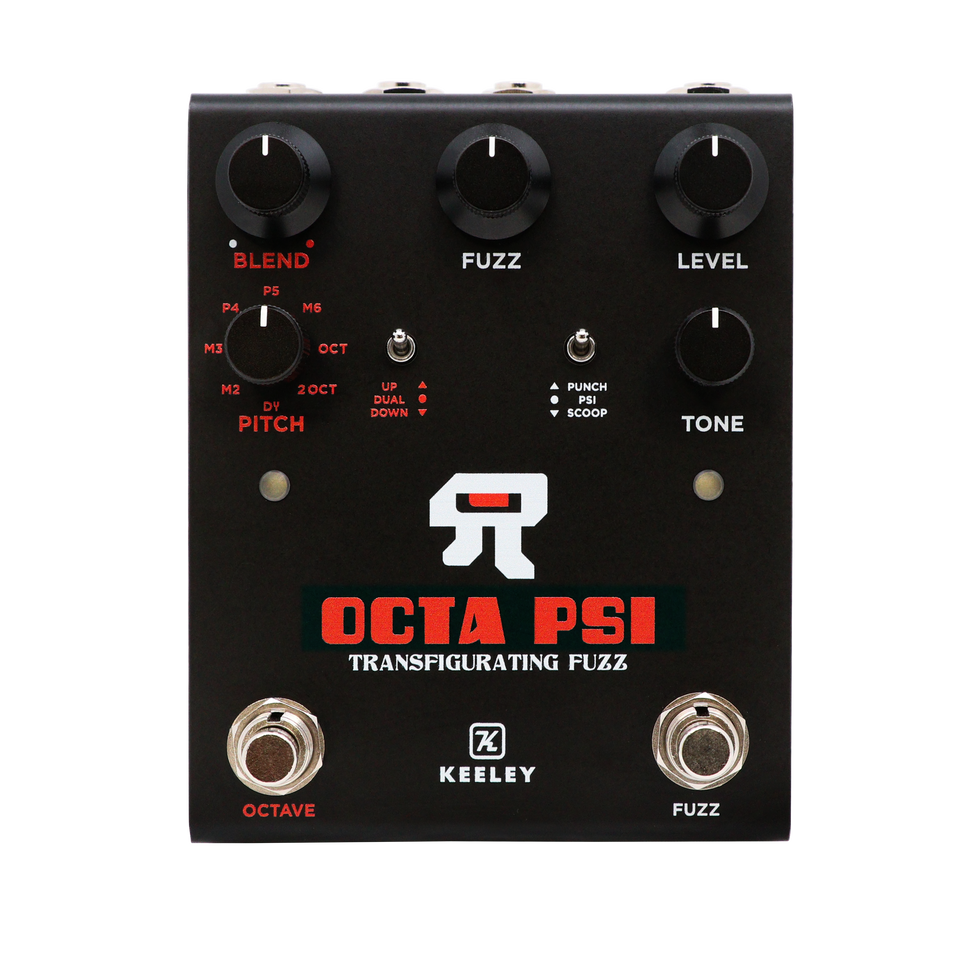
A couple years means you’re pretty confident in the pedal market, even with everything going on currently. Where do you think things are headed?
It’s still the golden age of pedals, but you’ll only have true success if you bring something new to the market. If you're just saying, “I’m doing the best Tube Screamer,” that ship has sailed.
I think pedals will be around for a very long time. They’re the quickest, cheapest way to get inspiration between your guitar and amp. And they’re malleable. You can put this one here, that one there, give it to your friend, get it back, find a video, and try something new.
What’s a pedal you've always wanted to make, but haven’t yet?
Number one is a MIDI “Klon” with digi-pots. It’d be an analog drive pedal with presets and MIDI control. Nobody’s doing that. I’d get to create a new category.
Should You Build Your Dream Guitar?
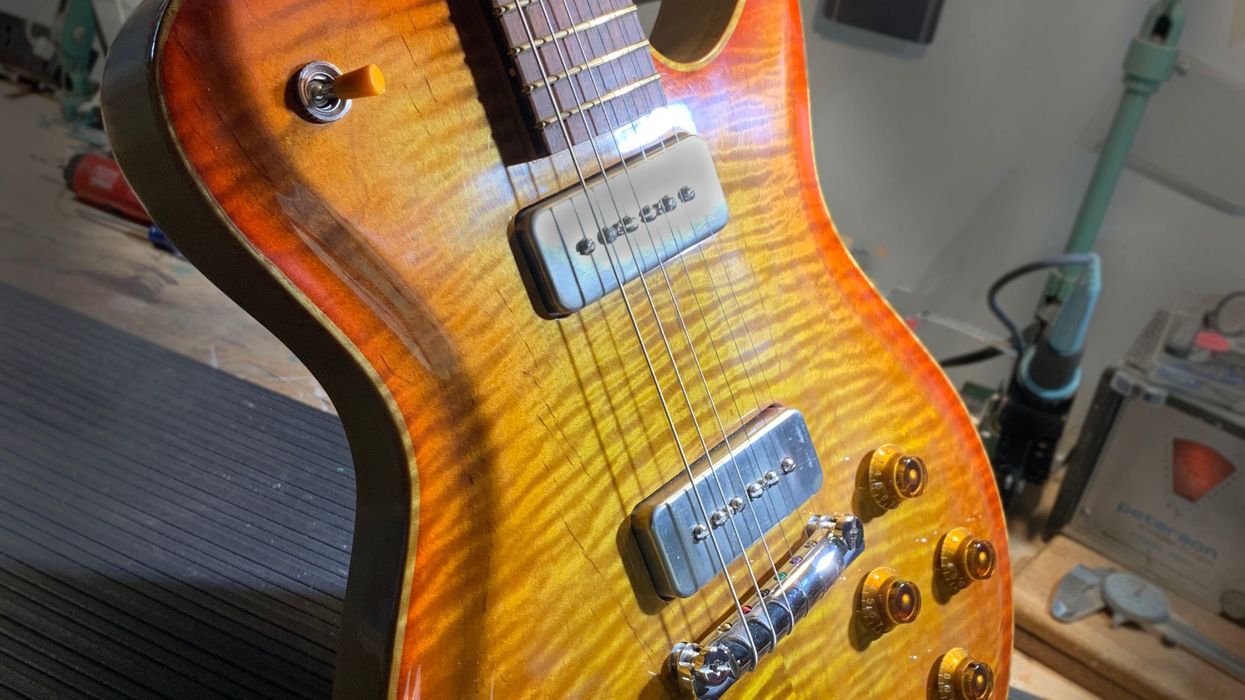
Somewhere around 3 am, a young guitarist awoke wide-eyed and elated from a cannabis-fueled dream. It was the summer of love—a time when anything seemed possible—and his dream-state adventure had led to a powerful revelation he was sure would shake belief systems into dust. Instinctively, he grabbed a pencil and paper from the nightstand, jotted down his epiphany, then rolled over and fell into the most satisfying and peaceful sleep of his life. The next morning he awoke with excitement, certain that his world was about to change forever. He reached for the note he’d left for himself, unfolded it, and read the words: “I feel funny.”
I think of this story when I see guitar designs that attempt to push the envelope of what is considered mainstream. Sometimes they work, other times not so much. Was the builder high? No doubt there have been groundbreaking changes in the electric guitar world. The humbucking pickup, the Flying V, the Stratocaster, wireless, the Floyd Rose tremolo, and DSP come easily to mind. For the most part the guitar marketplace was pretty staid up until those times, but Fender had fired the first shot in a space-race to capture a brave new guitar market that didn’t yet exist.
That isn’t to say that there hadn’t been advances in construction or presentation—there obviously had. Although the Telecaster presaged what was soon to come and had the attention of guitar manufacturers, it really wasn’t taken all too seriously. It’s arguable that the P-bass in 1951 may have been a wakeup call. Gibson and the old guard responded with 6-string solidbody variants of their own, but they were mostly scaled-down versions of their previous products in the classic “violin” mold. With the arrival of the Strat, things got real. And so, the first electric guitars of the modern era were born and fledged out into the world. It was a lukewarm reception at first.
“Valeno, Kramer, and Travis Bean married wood and aluminum, while Bunker and Steinberger broke the mold completely.”
This is a tale that has been told almost as many times as builders have cloned the Stratocaster. Yet as more and more people became interested in electric guitar, boosted no doubt by the arrival of the Beach Boys and the Beatles, the more experimental the design world became. It was clear that fashion was the ticket as much as mechanical or electrical innovation. The emphasis on the shape of a headstock and body as well as color became the new design canvas. Who could be the far-out grooviest? It hasn’t slowed down since.
As always, things settled into routine again. Paul Reed Smith wanted to morph two or more of the most popular shapes in electric guitar history. To his credit, he split the difference almost perfectly. Others, like John Suhr and Tom Anderson, sought to refine the Fullerton blueprint with admirable success, while Bernie Rico created a fever dream of wild shapes, string arrangement, and electronics. Many others gave it their best shot: Valeno, Kramer, and Travis Bean married wood and aluminum, while Bunker and Steinberger broke the mold completely. At Hamer, we looked to the vintage past for our future. Then things got stale again and everything seemed to be a rehash. It seems like we’ve been in a holding pattern of mix and match for a while now. Sure, playability has never been better, and choices are abundant beyond anything I’d ever imagined. Things are good.
As the guitar world becomes all the more deep and wide, with almost every neighborhood hosting a custom guitar maker, it becomes harder and harder to come up with something new. So, like every fashion house on earth, the name of the game is to dig into the past and blend parts and materials in the hope of catching a little lightning in a bottle. Once you realize that as long as the nut, fretboard, and bridge stay in the correct and same relationship, anything else can be changed. Like Legos, you can build your dream guitar by swapping influences—mixing and matching until you have that earth-shaking, world-beating gumbo that puts you on the map. Or not.
I’m not complaining, and neither should you. I constantly see new takes on old ideas and think, “Why didn’t I think of that?” You can now buy a $300 guitar that can make it through a stadium gig—at least once or twice. The old guitars have the romance and the new guitars have the muscle. I still look at Reverb and wish I had more money and space. Occasionally, I build out of my comfort zone but don’t worry about finding that life-changing thunderbolt. I also suggest avoiding ideas that are funny in the moment. And that brings us right back to that piece of paper on the nightstand.
Josh Smith on Blues, Tone, and Being True to Yourself | Off the Record
Josh Smith opens up about finding his voice in the blues (and beyond), crafting his signature tone, and why authenticity—not imitation—is the heart of his playing. The engaging exchange is a prime example in developing musical identity through introspective intention and detailed execution.
Being a contemporary bluesman has its pitfalls, dead ends, and challenges. Josh Smith reflects deeply on his relationship with the blues, acknowledging the cultural origins of the music and his position as modern ambassador (and interpreter) for the artform. He then discusses how switching from Strats to Teles shaped his own sound and playing style more than any other gear choice.
As the interview continues, Smith delves into the art of live performance and improvisation, valuing intent, rhythm, and connection with both the audience and bandmates. Smith talks honestly about the current challenges younger musicians face—namely the lack of live-gig opportunities—and contrasts that with his own development through hundreds of early gigs (even before the age of 18). The conversation ends with Smith detailing his ongoing experience as a producer, what he enjoys about helping artists realize their vision through his own expertise & instincts. Whether working with artists like Andy Timmons or playing in Joe Bonamassa's live band, Smith prioritizes rhythmic precision with present spontaneity and trying to be musical in every moment.
Deep Sea Diver Rig Rundown with Jessica Dobson
Frontwoman Jessica Dobson plunges into the depths of her Benson-powered road rig.
Seattle indie rockers Deep Sea Diver released their fourth full-length record, Billboard Heart, earlier this year via Sub Pop, and their supporting cross-country tour took them to downtown Nashville’s Blue Room at Jack White’s Third Man Records.
PG’s Chris Kies connected with singer and guitarist Jessica Dobson in 2020 for a virtual Rig Rundown, but this time we get a close-up, in-person look at Dobson’s tour kit, including her signature Benson stomp box and a custom guitar.
Brought to you by D’Addario.Lighten the Load
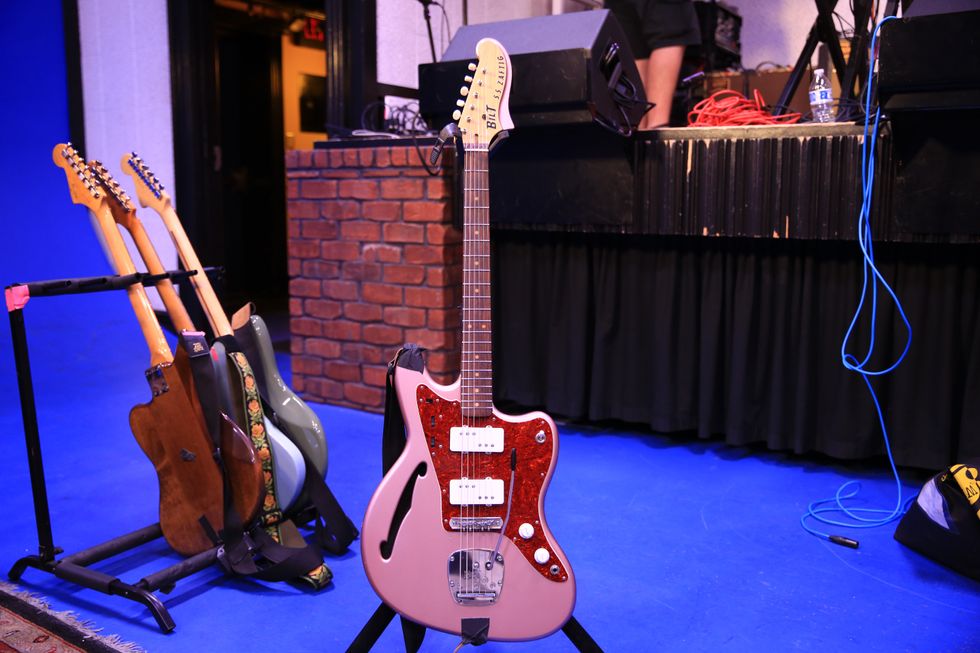
Dobson picked up this slick Bilt S.S. Zaftig to replace her beloved but terribly heavy Fender Starcaster. This one has Lollar Regal Wide-Range humbuckers in it.
Regrets, I’ve Had a Few
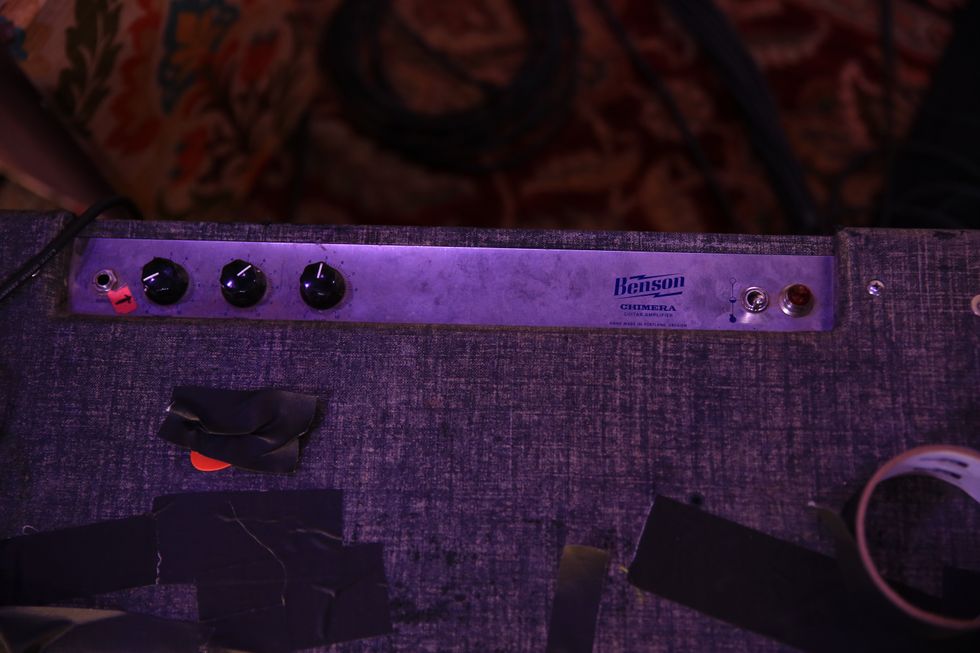
Dobson purchased this used Fender Elvis Costello Jazzmaster in 2010, and has since met the person who sold it—and totally regrets it. It’s strung with D’Addario .011–.052s, and tuned to E standard.
Blue Benz
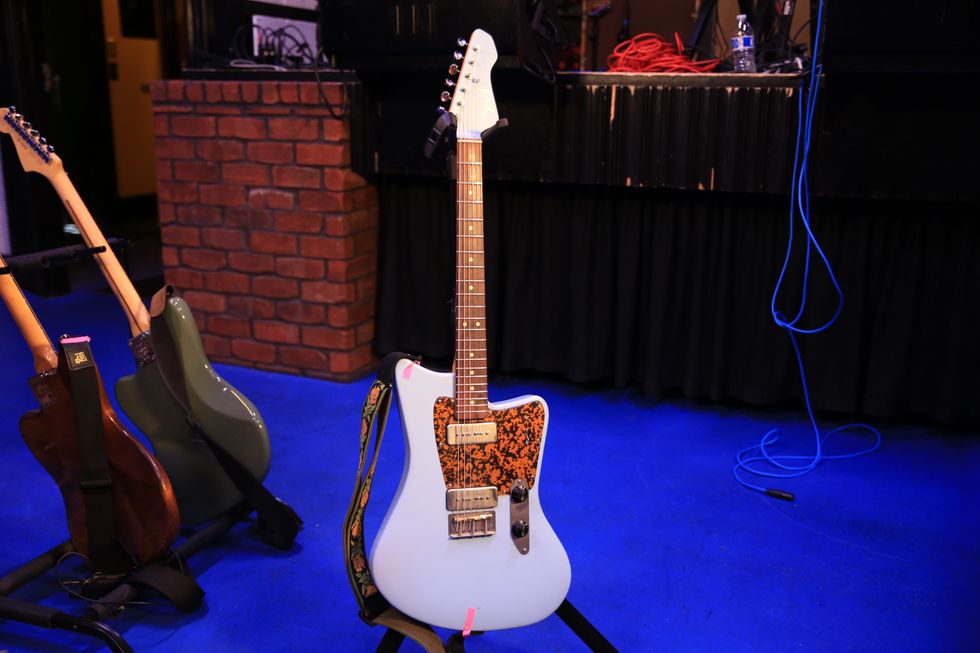
U.K.-based builder Elliott Trent modeled this custom Trent guitar for Dobson on her mother’s old blue Mercedes, and loaded it with P-90s.
Benson Boom Box
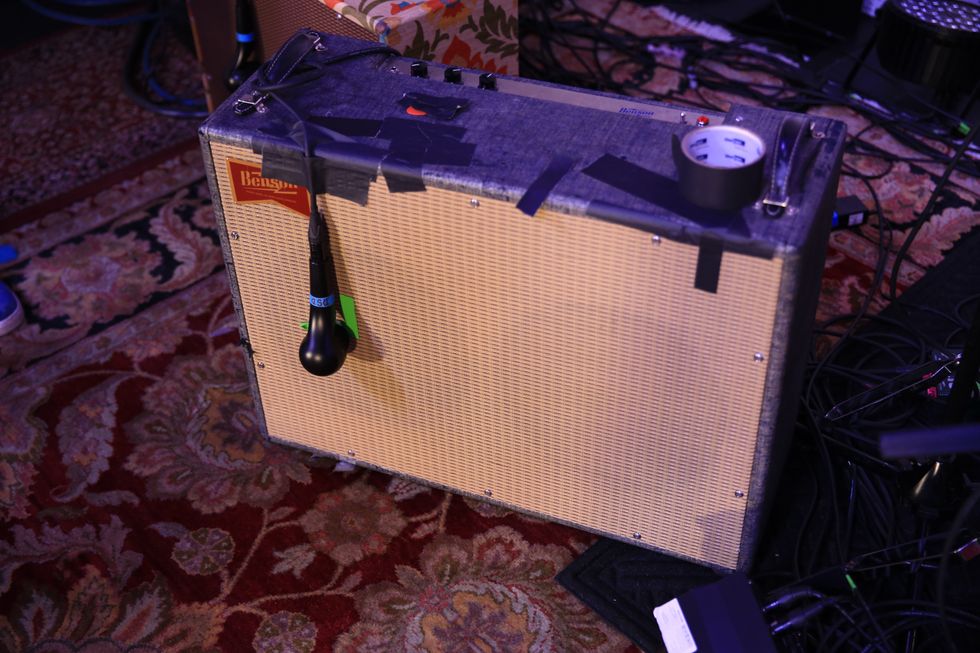
Dobson’s amp of choice, taped to perfection, is this 30-watt Benson Chimera 2x12 combo.
Jessica Dobson’s Pedalboard
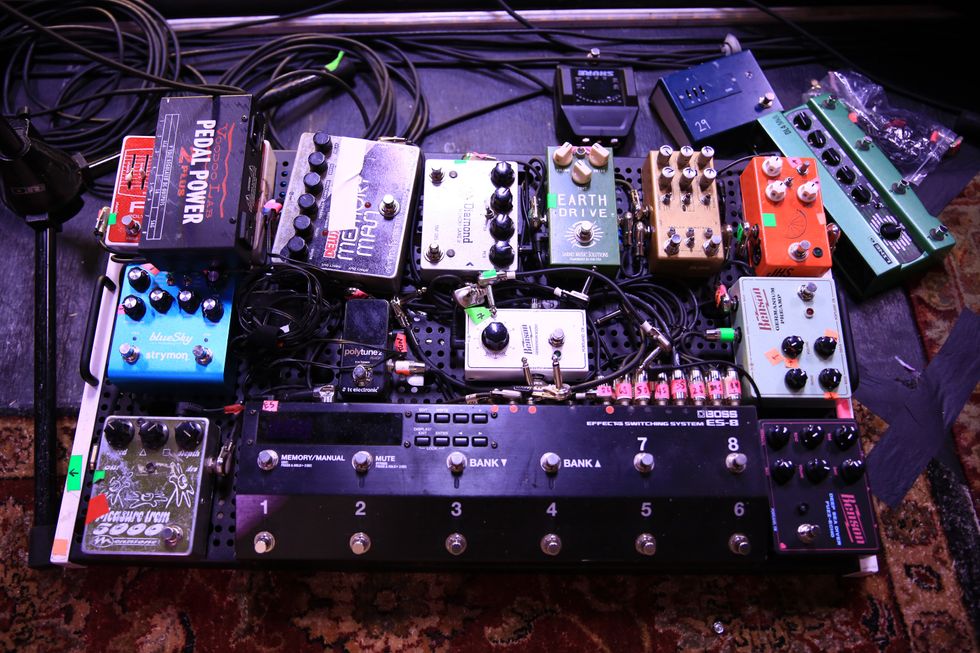
Dobson runs a busy board powered by a Voodoo Labs Pedal Power 2 Plus and operated via a Boss ES-8. There’s also her signature Benson Deep Sea Diver, plus a Benson Germanium Preamp, JHS Pulp N Peel, Sarno Music Solutions Earth Drive, Benson Germanium Boost, EHX Deluxe Memory Man, Strymon blueSky, EHX POG2, Chase Bliss Brothers Analog Gainstage, and Menatone Pleasure Trem 5000, plus a TC Electronic PolyTune 2 Noir.

Benson Deep Sea Diver
Benson Chimera
Benson Germanium Preamp
JHS Pulp 'N' Peel Compressor Pedal
Benson Germanium Boost
Electro-Harmonix Deluxe Memory Man Analog Delay / Chorus / Vibrato Pedal
TC Electronic PolyTune3 Noir
Strymon blueSky
Electro-Harmonix POG2
Voodoo Labs Pedal Power 2 Plus
Boss ES-8
Kiesel Guitars Rereleases the DC127
Kiesel Guitars has rereleased one of the most iconic models in the company’s line of custom-built instruments: the DC127 now rejoins the lineup of Kiesel’s premium US-made instruments for a limited time.
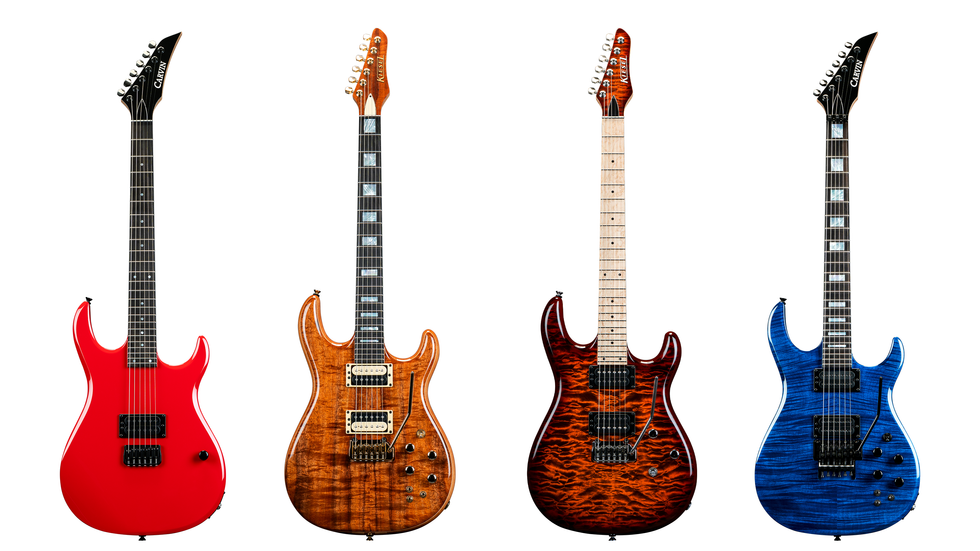
Designed to excel in a variety of musical styles, the versatile DC127 is available in a 6-string configuration. Key features include:
- Body tonewood options include Alder, Swamp Ash, Roasted Swamp Ash, Mahogany, Walnut, Black Limba
- 25” scale length, 24 stainless steel frets
- Fretboard material options include Ziricote, Ebony, Royal Ebony, Richlite Black Diamond, Richlite Maple Valley, Zebrawood, Rosewood, Birdseye Maple, Flamed Maple, Maple, Roasted Birdseye Maple, Roasted Flamed Maple, Roasted Maple, and Palemoon Ebony
- Electronics: Comes standard with either one or two Kiesel M22 pickups; various control layouts available, including a special option featuring 2 volume and 2 tone knobs with coil split and phase switches
- Bridge options include Hipshot fixed bridge, Hipshot tremolo, Floyd Rose tremolo with locking tuners
Like other Kiesel models, the reissued DC127 is available in a wide range of options for unique customization. Players can select their favorite finish, tonewoods, electronics and hardware to create the guitar of their dreams…expertly crafted in Kiesel’s Southern California custom shop.
Kiesel’s DC127 is available for street pricing starting at $1,799. For more information visit kieselguitars.com.
NUX Queen of Tone Review
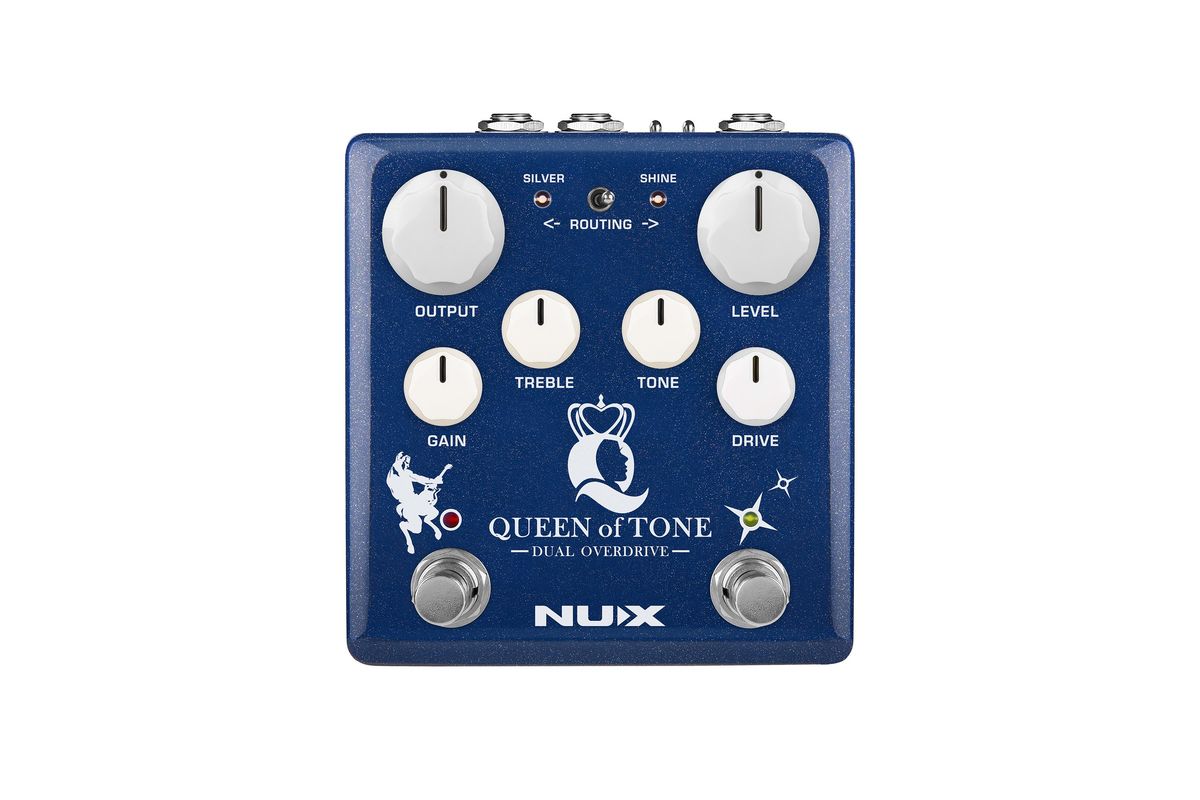
NUX’s Queen of Tone dual overdrive pedal is, at least in name, a clear nod to Analogman’s iconic King of Tone—which is, in a very general sense, a highly modified mash up of two Marshall Bluesbreaker circuits. However the Queen of Tone deviates from Analogman’s approach to the dual-overdrive concept in a significant way: The pedal retains some Bluesbreaker lineage in the form of NUX’s own Morning Star overdrive, a Bluesbreaker-style pedal that makes up one half of the QOT. But the other half of the two-overdrive set up is the Horseman, NUX’s version of the Klon Centaur.
The Morning Star side boasts controls for drive, tone, and level, while the Horseman’s control set consists of gain, treble, and output knobs. A routing switch enables you to switch the order of effects, and a toggle on the crown of the pedal selects true or buffered bypass. A second adjacent mini-toggle engages an input FET Stage that adds even more gain. There are also two hidden features of sorts: Holding down the Morning Star footswitch engages Shine mode, which adds treble boost and clarity. Pressing and holding the Horseman side, meanwhile, activates Silver mode, which extends the gain range of the Horseman circuit. (“Silver” refers to the silver Klon Centaur, which is typically considered treblier and sometimes raspier than the gold iteration).
The two circuits complement each other well and stack seamlessly.
One peculiar aspect of the Queen of Tone switching that’s worth noting: The pedal activates with the release of the footswitch, which enables the press-and-hold function for the Silver and Shine modes. Some players will perceive this as a lag, but if you can adjust your timing without upsetting your rhythm and flow, it’s merely a minor annoyance.
Gain On the Range
I tested the Queen of Tone with a Fender Telecaster and Gibson ES-355, alongside a tweed Deluxe-style 1x12" combo, and the pedal proved easy to use, extremely versatile, and adaptable to either guitar/amp combination. From the Morning Star’s juicy, dynamic, tube-like clipping to the Horseman’s clear, transparent, and slightly mid-forward response, there are a ton of tones to tap into, and the vast majority of the sounds are not only useful, but loveable. What’s more, the two circuits complement each other well and stack seamlessly, offering a unique gain structure depending on the signal order.
NUX addressed a common issue with Bluesbreaker-style circuits, which often require maxing the level control for adequate output. Here, there's more headroom to work with, which, along with the extra high-end shimmer from the Shine mode, contributes to a very present tone. There’s plenty of cut and brightness available from the Horseman side, too. For my taste, the Silver mode pushed things a little too bright, but it’s useful when you need leads to soar. Engaging the FET switch also produces a notable increase in gain to either side. But as you might guess, with all the extra brightness and gain already built into the extra circuits, it can be overkill unless you really want to hammer your amp’s front end.
It could be argued that neither of these circuits is quite as lush or transparent as some boutique counterparts. But even discounting the cost savings, which are considerable, both the Horseman and Morning Star hold up very well on the tone front. Brought together in the Queen of Tone, they open up a huge expanse of gain-shaping possibilities.
A Telecaster Enthusiast Adds Six Strings and Doubles the Jangle
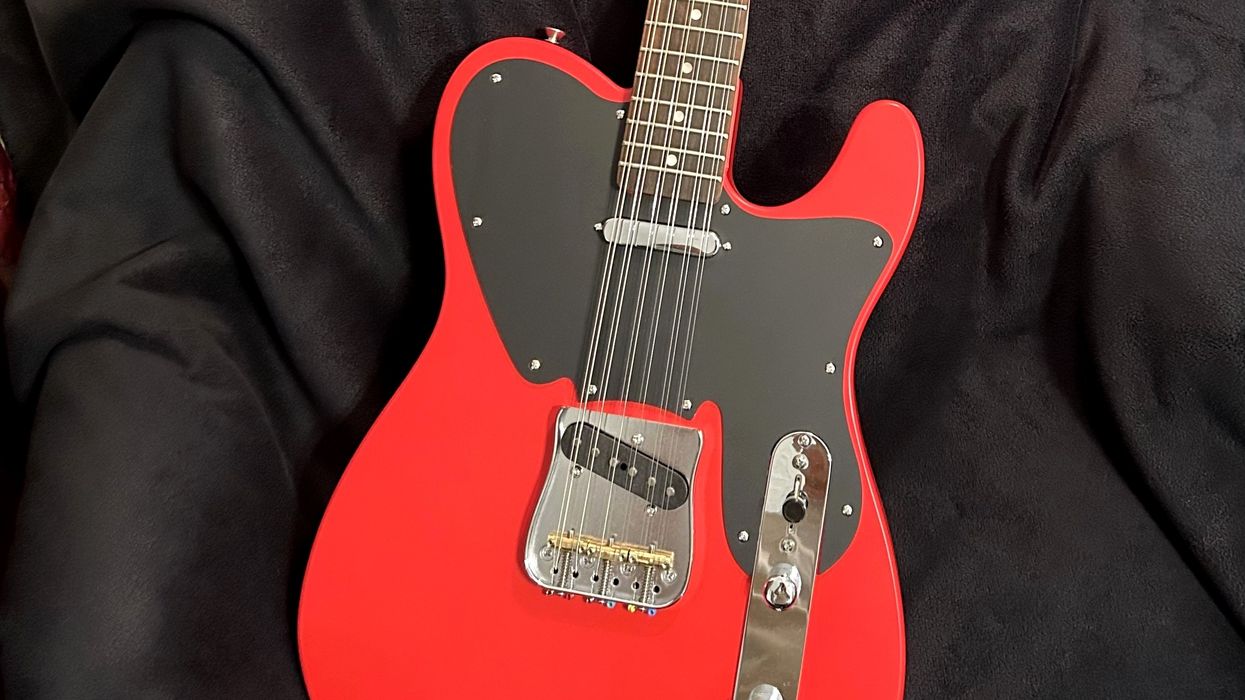
Reader: Mark Shadle
Hometown: Atlanta, Georgia
Guitar: dodeka
I’ve been a Telecaster guy from my very first electric guitar purchase, and I’ve since had many in addition to numerous T-style versions that I built myself. I do like variations on the original theme such as the Thinlines and models with humbuckers, but my heart lies mostly with the single-coil models. My second and current obsession is 12-string guitars which I got into around a year ago. And because I’ve practiced and played 12-strings almost exclusively since, I’ve had a difficult time enjoying playing 6-strings again. This led me to build what I consider the ultimate T-style guitar. I have seen a few 12-string Telecaster models before—the most recent being a Japanese Fender Flagship Store exclusive. But it was never imported to the United States, and while they are still available today, they exist in limited numbers on the used market, most appear to be in Japan, and they are expensive.
The body on dodeka is alder which is painted with a fiesta-red matte-nitro finish. The neck is maple with a rosewood fretboard and Gotoh machine heads. Taking inspiration from a Fender 1951 Precision Bass, the custom pickguard is single-ply Bakelite. Pickups are Fender American Vintage ’62 Custom single-coils with alnico 3 magnets in the neck and alnico 2’s in the bridge. The bridge is solid brass, which was CNC’d in a custom shape that mirrors a Telecaster’s lines. It also has grooved brass compensated saddles, which help keep all those strings aligned. Lower-octave strings are routed through the body and the high-octave and unison strings are top-loaded through the bridge. Intonation is surprisingly very good and close to spot-on with all strings.
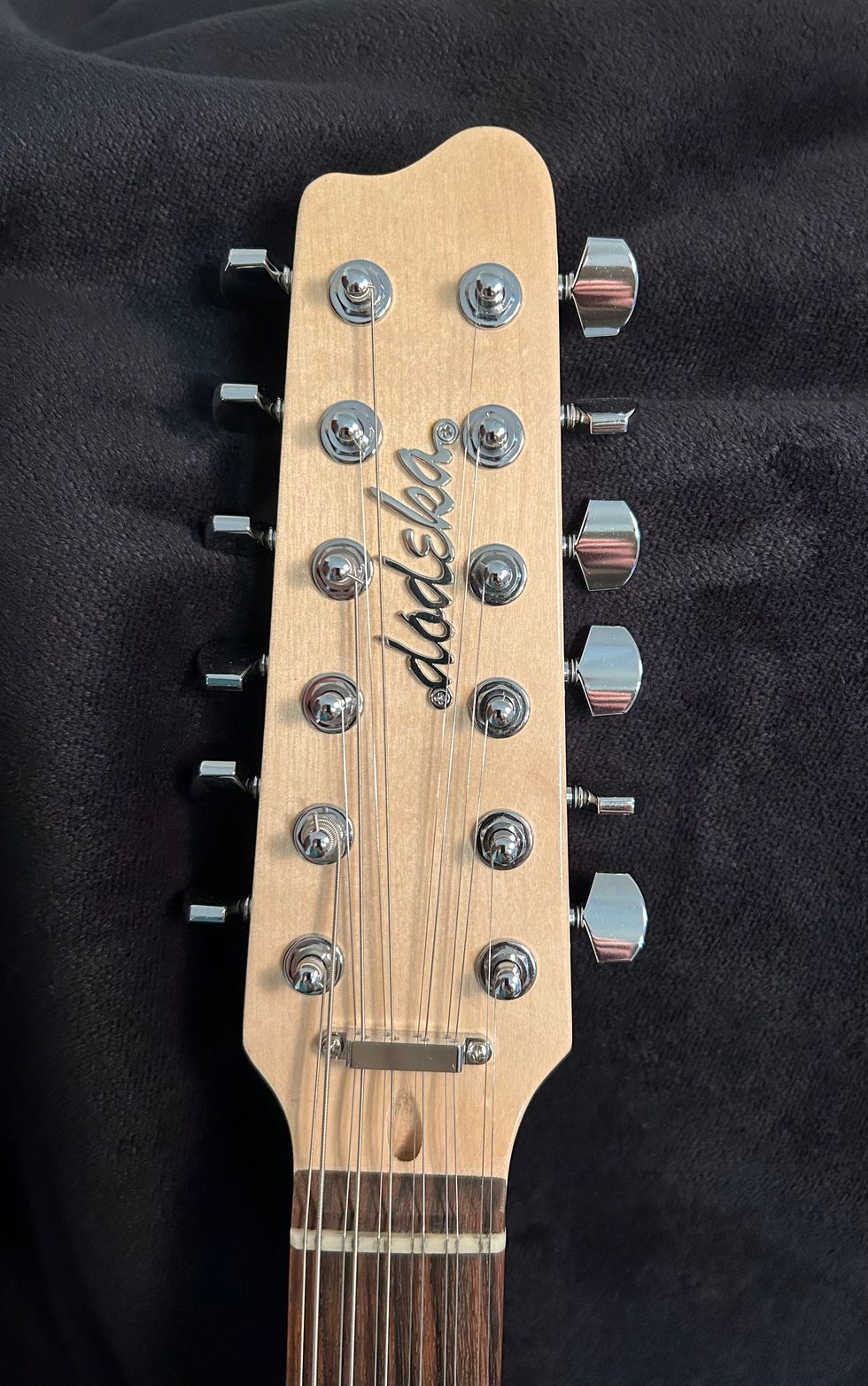
I stuck to a traditional setup when it came to the electronics and control harness, utilizing a configuration with a 3-way switch, a .047 uF orange drop cap, and CTS 250k pots. I also added a .001 cap and 100k resistor to the volume control for more treble bleed when you reduce guitar volume. It’s all wired with vintage push-back wire and finished with a Switchcraft jack mounted in an Electrosocket plate. The name dodeka, by the way, comes from the ancient Greek word for 12, and I read somewhere that the word’s origins are rooted in a manner of saying “6 + 6,” which made it even more fitting.
When I first played the guitar, I was so pleased that it sounded so resonant—almost as if it had a hollow cavity in the body, which it most certainly does not. I often sit and play it without plugging it in as I enjoy the acoustic aspect of its sound. The sustain is fantastic and the guitar stays in tune nicely. It sounds extraordinary when plugged into my Vox AC30 with some added light compression and chorus, and can be very chimey, with a sound similar to a Rickenbacker 12. I am very pleased with the finished product and really glad that I pursued my 12-string Telecaster dream!
PRS Guitars Announces Four Fresh Colors for the SE Silver Sky
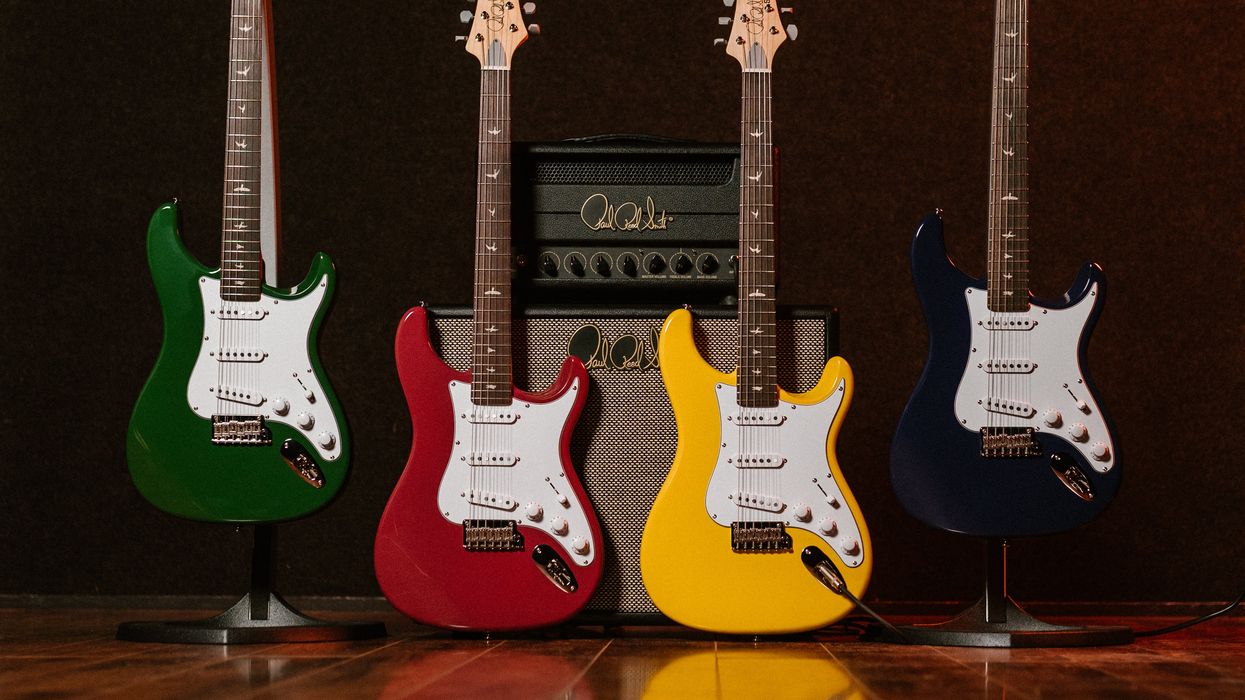
PRS Guitars today released the SE Silver Sky Rosewood in four new colors, created in collaboration with Grammy award-winning PRS Signature Artist, John Mayer. The fresh finishes, offered for the first time on any PRS model, are Derby Red, Trad Blue, Laurel Green, and Dandy Lion (a brilliant and eye-catching yellow).
“The new Silver Sky SE lineup features four new colors inspired by traditional American fashion. These are time-tested hues that have been popular through decades, and I’m excited to share them with the world as the latest SE colorways,” said John Mayer.
The SE Silver Sky is a familiar iteration of the original Silver Sky model that was first introduced with John Mayer in 2018. The SE starts with a poplar body, bolt-on maple neck, and rosewood fretboard with PRS trademark bird inlays. The 22-fret, 25.5” scale length neck features the original 635JM carve and an 8.5” fretboard radius. It is anchored by three single-coil 635JM “S” pickups, a two-point steel tremolo, synthetic bone nut, and vintage-style tuners.
The SE Silver Sky Maple colorway is also being updated to include two new finishes previously offered on the rosewood-equipped model. The SE Silver Sky Maple's new color palette is Moon White, Stone Blue, Summit Purple, and Nylon Blue.
PRS Guitars continues its schedule of launching new products each month in 2025. Stay tuned to see new gear and 40th Anniversary limited-edition guitars throughout the year. For all of the latest news, click www.prsguitars.com/40 and follow @prsguitars on Instagram, Tik Tok, Facebook, X, and YouTube.
The Bud SIX: One Amp, Every Gig? | PG Plays
PG contributor Tom Butwin explores the Henriksen Bud SIX, a compact 9″×9″ amplifier that delivers 120 watts of clean, full-range sound. Weighing just 13 pounds, this U.S.-built amp is designed for working musicians who need reliable tone, real power, and maximum flexibility in a small footprint.
Each of its two channels features XLR and ¼″ combo inputs, phantom power, a five-band EQ, reverb, and presence control. Independent effects loops allow for detailed signal routing whether you're playing acoustic or electric, singing, or using backing tracks through wireless or aux input. The Bud SIX also includes a post-EQ and post-reverb XLR line out, a headphone jack for silent monitoring, an extension speaker output, and a tweeter defeat switch. It comes with a tilt-back wedge and a padded gig bag to make setup and transport easy. Whether you're a jazz guitarist, a solo performer, or running a pedalboard-heavy rig, the Henriksen Bud SIX is a powerful and clear solution that adapts to almost any stage or studio environment.
Learn more and find your new "Bud": https://henriksenampfliers.com
The Bud SIX
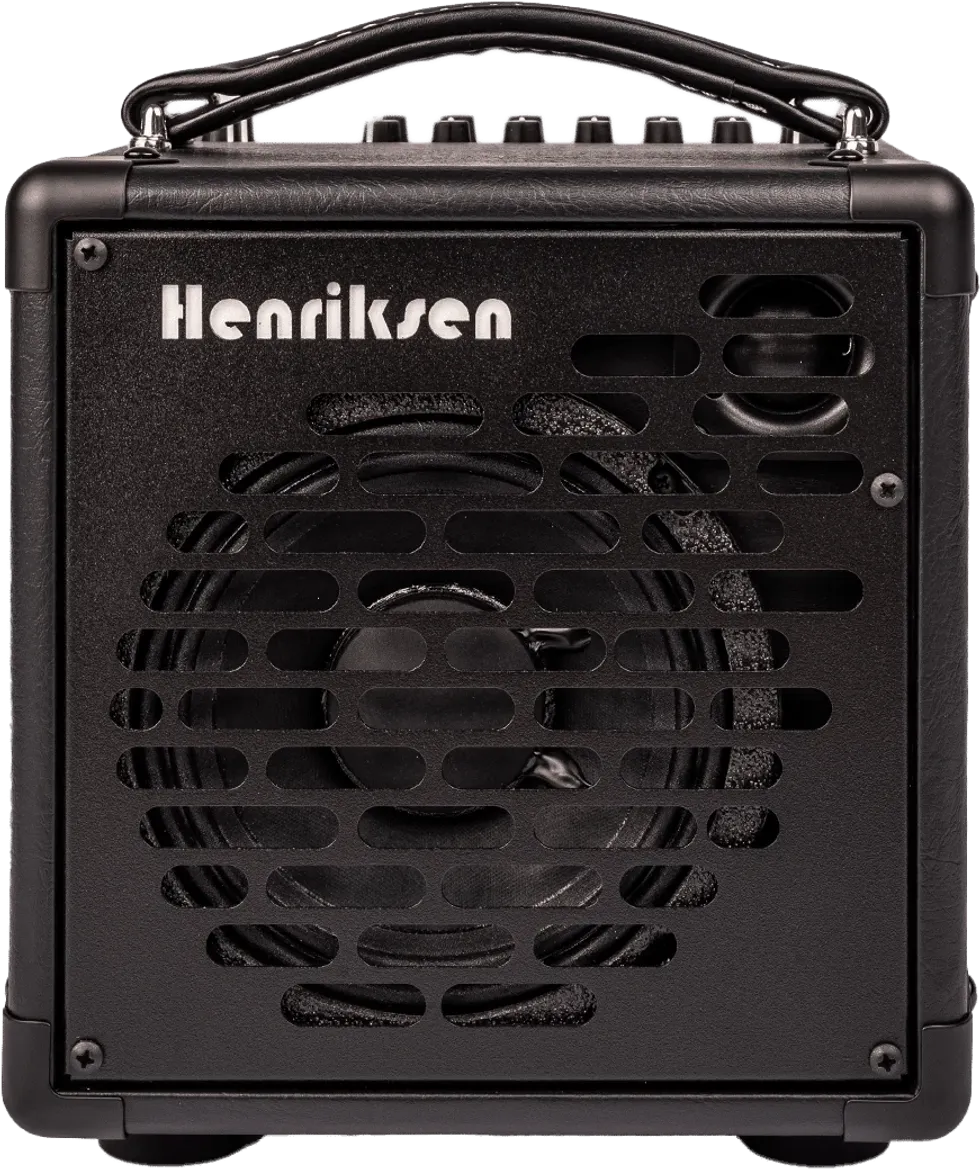
Do you want to have an amplifier the size of a toaster that gives you the quality of tone for BOTH electric and acoustic instruments that you’d expect from a studio situation with enough volume to cover almost any gig? Of course you do. That’s why if you play guitar, or any stringed instrument with a pickup for that matter, you need a Bud. The Bud has every feature you need and more than enough volume to get your bandmates or club manager to ask you to turn down, and coupled with the extension cabinet you can keep up with the heaviest-handed drummer with no problem. The amp and cabinet are naturally feedback resistant which limits the need for artificial notch filtering and other suppression technologies that negatively effect your tone.
But it’s not all about size and volume, there are lots of tiny, loud amplifiers on the market. You’ve tried them. You know what they sound like. The Bud is different. Henriksen Amplifiers is all about tone first, the incredibly portable size and feature set of The Bud were developed around the sound, not the other way around and you can definitely hear the difference. Our pre-amp, from input to output, is designed using the highest grade audio components. We offer a 5-band EQ with carefully chosen center frequencies which were fine-tuned by ear to meet the demands of different playing environments using the widest possible array of musical instruments. We give you two identical pre-amps, each with independent EQ and reverb and actual 48 volt phantom power, and an auxiliary input on each channel so that whatever you are using it for can be EQ’d separately from your instrument signal.
Gibson Honors Sierra Hull with Signature Gibson Mandolin

Gibson continues to set the benchmark for craftsmanship, quality, innovation, and sound excellence, honoring the trailblazing mandolin virtuoso Sierra Hull with her very first signature F-5 Master Model and F-5G mandolins.
Gibson has shaped the sound of music since 1894, when Orville Gibson first designed and built mandolins in his workshop. 130 years on, the groundbreaking and forward-thinking carved top design that revolutionized the mandolin and guitar world, delivering a louder, more durable, more playable instrument, remains the DNA of every Gibson.
To honor this journey, Gibson is proud to celebrate the groundbreaking two-time GRAMMY®-nominated mandolin virtuoso, singer, guitarist, and songwriter, Sierra Hull, who is now the first-ever female artist to have a signature Gibson mandolin. On October 7, Gibson will debut the Sierra Hull F-5 Master Model and the Sierra Hull F-5G mandolins worldwide. Both mandolins will arrive in a Sierra Burst VOS Varnish finish and come with unique case candy in a package worthy of this trailblazing artist who has taken the mandolin and bluegrass communities by storm.
“We spent about two years talking and dreaming about what this mandolin would become,” says Hull. “The exciting thing for me is that the mandolin that I have played exclusively since 2009 was signed by Master Luthier David Harvey. It’s become my voice after so many years of playing it. Being able to work on this project with David personally gave me the confidence that we’d be able to achieve something unique, while still honoring the legacy and history of those beloved Master Model mandolins. It’s exciting and full circle to see these new mandolins with my name on them and his signature inside.
“When I finally played the prototype for the first time, I knew these instruments would be something that I could be proud of. They are hand-built with the highest level of quality by the team at Gibson—many folks who have worked there for years. Mandolins can also be very expensive. They take a lot of time and care to build right. If I’m going to put my name on something with that kind of price tag, it needs to be a great instrument and something long-lasting. I truly believe these mandolins are, and I’m really proud of that.”
“Sierra Hull is one of the most gifted mandolin players and singer-songwriters of our time,” says Mat Koehler, Vice President of Product at Gibson. “She has redefined what’s possible on the mandolin and across the many genres she explores. Her signature models reflect her passion for the instrument and her uncompromising approach to tone and feel. Each one is built with pride, authenticity, and soul at the Gibson Custom Shop, and we’re honored to have worked with Sierra to bring them to life.”
"Sierra's music transcends traditional bluegrass - she strikes a beautiful balance between old-time sounds and contemporary Americana, pioneering and shaping the sound of modern acoustic music and inspiring a whole new generation of music lovers,” adds Codey Allen, Gibson Cultural Influence-North America. “Sierra has inspired all of us at Gibson, and it has been a joy to share the creative process with her. She has poured so much time, love, and attention into every detail of her signature mandolins, and we are grateful to share in this celebration of her art."
Explore the current Gibson mandolins HERE, as well as the Epiphone Bluegrass Collection HERE.
Sierra Hull - "Lord, That's A Long Way"
“This was the first time I’ve gotten to see the process of building mandolins up close and personal, which has been such a beautiful and fun thing to witness,” continues Hull. “To see a mandolin go from simply a piece of wood to the final product of an amazing instrument is kind of mind-blowing. I’ve never been one to know a lot about the ins and outs of wood types, or real specs of instruments, but I am really connected to what I feel and hear from an instrument—even if I don’t always have the language to discuss it. I’ve learned, and continue to learn, a lot about this tiny instrument I love so much through this process. It’s been so fun.”
Currently nominated for the International Bluegrass Music Association’s “Female Vocalist of the Year” and “Mandolin Player of the Year,” Sierra is also the only woman to have been nominated for, let alone win, six International Bluegrass Music Association (IBMA) “Mandolin Player of the Year” awards, Sierra Hull is world-renowned for her exceptional technical proficiency and genre-bending musical style. Sierra started playing mandolin at age eight, and by age 10, made her Grand Ole Opry debut. Her fusion of bluegrass, Americana, folk, jazz, and modern progressive acoustic music attracted the attention of other highly skilled bluegrass musicians, and she has collaborated with and received accolades from Eric Clapton, Dolly Parton, Brandi Carlile, Cory Wong, Billy Strings, Dave Matthews, Bill Kreutzmann, Sturgill, Simpson Gillian Welch, Béla Fleck, and Alison Krauss. Hailing from Byrdstown, Tennessee, Hull’s innovative sound is deeply rooted in bluegrass yet continually pushes boundaries.
How to Use EQ Like a Pro
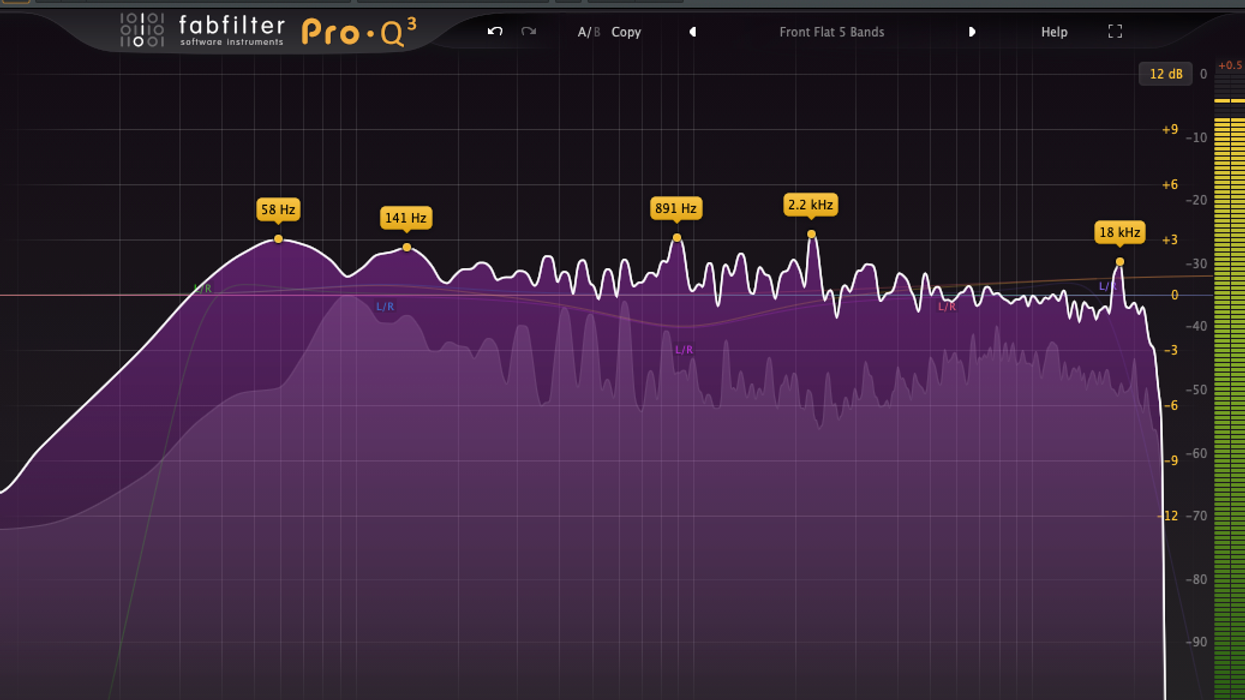
Crafty use of subtractive equalization can define the old adage “less is more.”
One of the earliest revelations for guitarists learning to record themselves at home is that what sounds good soloed doesn’t always translate well in the mix. Many instinctively reach for EQ with a boost-first mentality—more presence, more warmth, more punch. But a more effective and musical approach often lies in the art of subtraction. When we remove the right things, space emerges for the character of the guitar to shine without fighting for attention. This month, I’m going to give you some EQ techniques to help make your recordings sound professional. Tighten up your belts, the Dojo is now open.
When EQing guitars, especially multiple layers of electric (and/or acoustic) parts, the first step is identifying where frequencies are clashing or clouding the arrangement. That usually means isolating your track and listening closely for signs of muddiness, boxiness, or harshness. These problems tend to gather in generally predictable frequency ranges. For example, mud and boominess often live between 200 and 400 Hz. Boxiness can lurk from 400 to 800 Hz. And the harsh nasal presence that makes a guitar feel brittle or grating usually hovers in the 2.5 to 4 kHz region.
Try this: Temporarily boost an EQ band by +10 dB with a medium Q and sweep through these frequencies until you locate the ugliest resonance(s), then gently reduce it/them with a tighter Q and a lighter touch, often just 2 to 4 dB. You’ll be amazed how the entire performance opens up when you remove the right junk.
Once the trouble frequencies are addressed, EQ becomes a more graceful tool for shaping tone. Subtractive EQ clears the canvas, letting you gently reintroduce body or presence where needed. This is where shelving EQ comes into play. A low shelf can bring warmth or fullness to a guitar that now feels thin from all the midrange cleanup. A modest bump at 80 to 120 Hz—just a dB or two—can fill out the sound, but it’s only effective if you’ve already dealt with masking around 200 to 300 Hz. Likewise, a high shelf can help lift a track into clarity and air, especially if you’ve trimmed that harsh upper-midrange build-up. Once the 2.5 to 4 kHz range has been smoothed out, a high shelf boost from 3 to 6 kHz will add shimmer and definition without aggression.
“Your ears should always be calibrating to the ensemble, not just the isolated signal.”
One of the greatest EQ challenges comes when stacking multiple layers of guitar. While it’s tempting to think that more is more, each additional track adds weight to overlapping frequencies, quickly turning rich textures into a blurry wall of noise. To prevent this, it’s helpful to think of EQ as a way of assigning each part its own lane. Maybe one rhythm track gets a small cut around 300 Hz, while the second has a dip at 500. One lead might have a bit less bite at 4 kHz, while another leans into a little high-end sheen. These are subtle moves, but when layered thoughtfully, they allow the listener to perceive each track distinctly, rather than as a blend of midrange congestion.
All of this assumes you’re frequently toggling between soloed and full-mix listening. It’s easy to over-EQ when listening in isolation, especially with midrange cuts. What feels like a relief to the ear in solo may rob a part of its edge or personality in the context of a full arrangement. A useful rule of thumb in the Dojo is: Solo to find the problem, mix to determine the solution. Your ears should always be calibrating to the ensemble, not just the isolated signal.
For those encountering intermittent harshness—say, a strummed acoustic guitar that only gets brittle during certain attacks—dynamic EQ is an elegant solution. Instead of making a static cut that dulls the track, a dynamic band can be set to tame harsh peaks only when they occur, such as around 3.5 kHz. This preserves the life and detail of the performance while reigning in the discomfort.
Ultimately, EQ should be approached like a sculptor working with stone: The goal is not to pile on more material, but to reveal what’s already there by removing what isn’t serving the final form. By focusing on reduction first, and only adding when it enhances clarity or emotional presence, home recordists can achieve mixes that sound more professional, more intentional, and less fatiguing. Until next month, namaste.
Blackstar Launches Polar Go Pocket-Sized Professional Studio
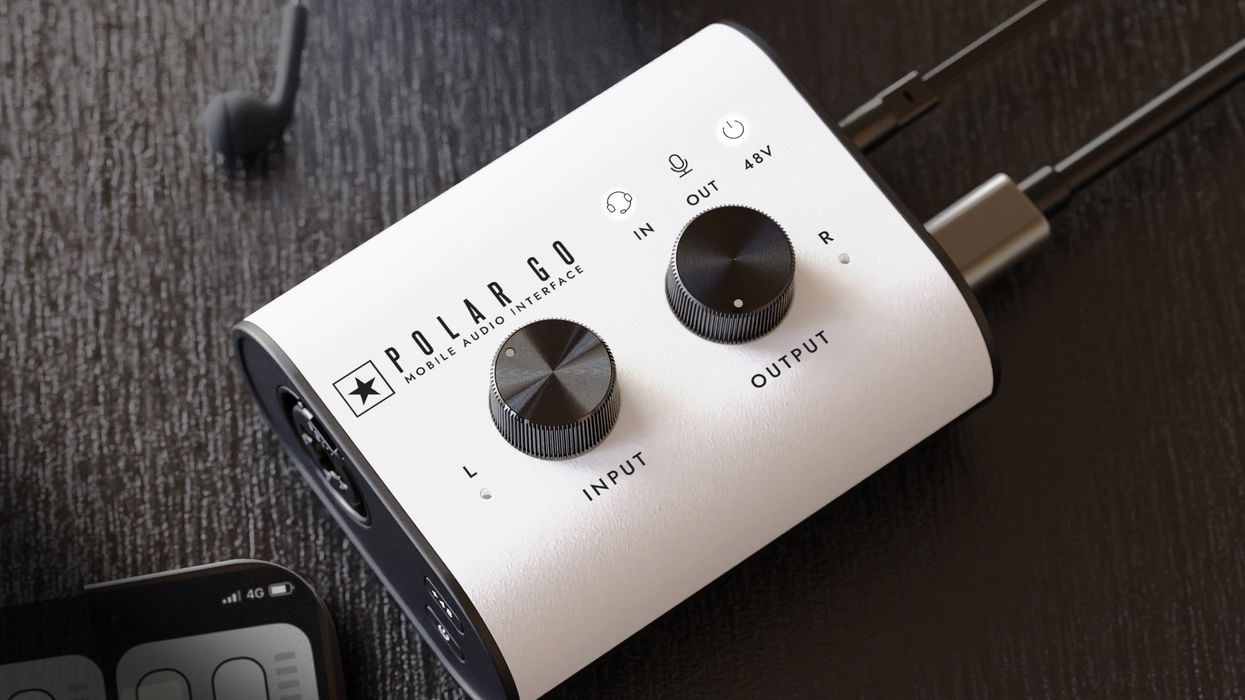
Blackstar Amplification has unveiled Polar Go, an ultra-portable audio solution for musicians and content producers who demand pro-level sound without the hassle of a full studio setup.
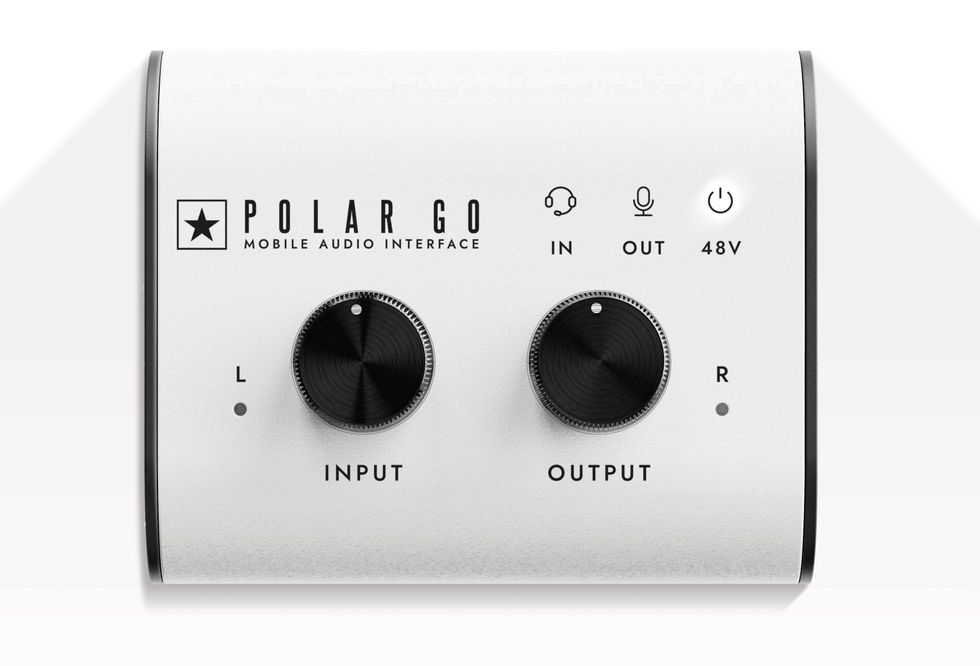
Polar Go is more than a mobile interface; it’s a complete, pocket-sized studio designed for the modern creator. With a built-in stereo mic system powered by Blackstar’s exclusive ProCapture™ technology, Polar Go delivers crystal-clear, professional-grade sound straight from your phone, tablet, or laptop, no studio or experience required. Whether you’re a singer-songwriter, podcaster, livestreamer or filmmaker, Polar Go transforms your audio from phone-quality to studio-ready instantly. Guitarists and bassists can plug in their instrument or use the built-in stereo mics to record anywhere, anytime.
Key Features:
- ProCapture™ Stereo Mics: Capture vocals and instruments with stunning depth and clarity
- Combo XLR / ¼” Input: For mic, line or instrument, with +48V phantom power for condenser mics
- Rechargeable Battery: Up to 6 hours of portable recording power
- Works with iOS, Android, macOS, Windows
- Dual USB-C Ports: One for power, one for data
- 3.5mm Headphone Output: Loud and clear monitoring, even on noisy sets
- Compatible with GarageBand, BandLab, Zoom, and all major recording apps
The Polar Go App:
- Available free on iOS, Android, Mac and PC, the Polar Go app gives creators powerful tools to polish and share their content with ease:
- Magic Wand Tool: Auto-enhance audio with one tap
- Built-In Video Recording: Sync sound and video in a single app
- Presets for Vocals, Guitar, Podcasts, and More
- Zero Learning Curve: Simple, intuitive UI
Blackstar’s Polar Go carries a street price of $129. For more information visit blackstaramps.com.
Pelican’s Face-to-Face Heavy Rock Ethos

On Flickering Resonance, the instrumental auteurs throw down a spellbinding slab of post-metal majesty.
To some, a rock band without a singer can seem like a band without a voice. But for Pelican, the lyrical guitar lines of Trevor Shelley de Brauw and Laurent Schroeder-Lebec are not without a point of view. Their self-professed “unconscious melting pot” of influences includes post-hardcore, punk, and doom metal, among others, but their music also often displays the grandeur of cinema, blending a thick sonic backbone with melodic passages and moments of quiet, introspective solemnity. They intentionally press against the heaviness of their preferred drop-tunings and endlessly yearning rhythms to find a musical sweet spot that is as uplifting as it is unrelenting. “I think the music has this exalting, elevating melody to it that could be described as positive or affirming,” describes Schroeder-Lebec. “It was never the intention to be dark or foreboding or menacing.”
The instrumental post-metal band came together in 2001 in Chicago, Illinois, with guitarists Shelley de Brauw and Schroeder-Lebec, along with brothers Bryan Herweg (bass) and Larry Herweg (drums). Known for incorporating expansive, ambient passages that set them apart from their contemporaries, Pelican has released several well-received albums since the early-aughts, starting with their debut EP, Pelican (2001), and subsequent full length, 2003’s Australasia.
Songstream
On their latest album, Flickering Resonance, Pelican takes “as much inspiration from titanic ’90s post-hardcore, space-rock, and emo as they do traditional metal, showing that though Godflesh and Goatsnake records occupied the shelves of Pelican’s songwriters, so too did Quicksand, Christie Front Drive, and Hum,” writes band biographer David Anthony. “Pelican’s foundation was built upon the rule-free, genre-agnostic [’90s] scene synonymous with Chicago’s [legendary] Fireside Bowl.”

Trevor Shelley de Brauw’s Gear
Guitar
- 1972 Gibson SG
Amp
- Sunn Model T
- Emperor 4x12
Effects
- Dunlop DVP Volume
- EarthQuaker Devices Avalanche Run Stereo Reverb & Delay
- EarthQuaker Palisades Mega Ultimate Overdrive
- Line6 DL4 MkII Delay Modeler
- Strymon BigSky Multi Reverb
- TC Electronic ND-1 Nova Delay
- TC Electronic PolyTune 3 Polyphonic Tuner
Strings and Picks
- D’Addario (.013–.056)
- Jim Dunlop USA Tortex Standard (.72 mm)
Most of the songs on Flickering Resonance were written by Shelley de Brauw, Schroeder-Lebec, and Bryan Herweg sitting in a room together. “We’ll get a rough version of a song together, record a voice memo [on a smart phone], send it to Larry, and he’ll compose drum parts around it,” explains Shelley de Brauw. “But the meat of the process is really all four of us being in a room together jamming and figuring out where the songs want to go. Once we’re in a room, we can really edit so that the DNA of all four of us is in there and it flows in a way that feels natural for us as a band.”
A core influence on Pelican’s DNA is post-hardcore progenitors Fugazi, and their indelible creative imprint is all over Flickering Resonance, even if subversively. “Those records were written in a space, jamming together, and somebody’s coming up with something, and somebody else comes up with a counterpoint, and then everything just starts to gel over time,” observes Shelley de Brauw. “For us, it’s a similar process in that the exchange of ideas makes the music feel more organic in a sense.”
“I think the music has this exalting, elevating melody to it that could be described as positive or affirming. It was never the intention to be dark or foreboding or menacing.” —Laurent Schroeder-Lebec
Aside from Shelley de Brauw’s occasional use of Ableton, he and Schroeder-Lebec mostly eschew leaning on DAWs for crafting songs and records, even if that means slowing down some of the productivity. “You can be super productive [with technology] if you’re like, ‘I’ll throw up an arrangement, lay it down to a click tonight, send it to you, and if you’ve got a part that fits pretty good, you lay that down,’ but it sometimes takes away the back and forth that happens when you’re hashing out the riffs in a room together,” explains Schroeder-Lebec. “And that’s what feels familiar and gratifying. It ends up being a better representation of the band in the end.” It took Pelican six years since their last album, Nighttime Stories, to complete Flickering Resonance, a testament to their face-to-face writing ethos.
Pelican recruited Sanford Parker to engineer the Flickering Resonance recording sessions. He’s worked with the band on and off for the past several decades, including for their first album, Australasia. “The idea was to work with somebody in a complementary way rather than a directive way,” explains Schroeder-Lebec. “Recording with Sanford seems to be a combination of miking with the DI out and staying open to the idea of splitting cabs, splitting heads, and trying to maintain the sound that you’re playing out of.”
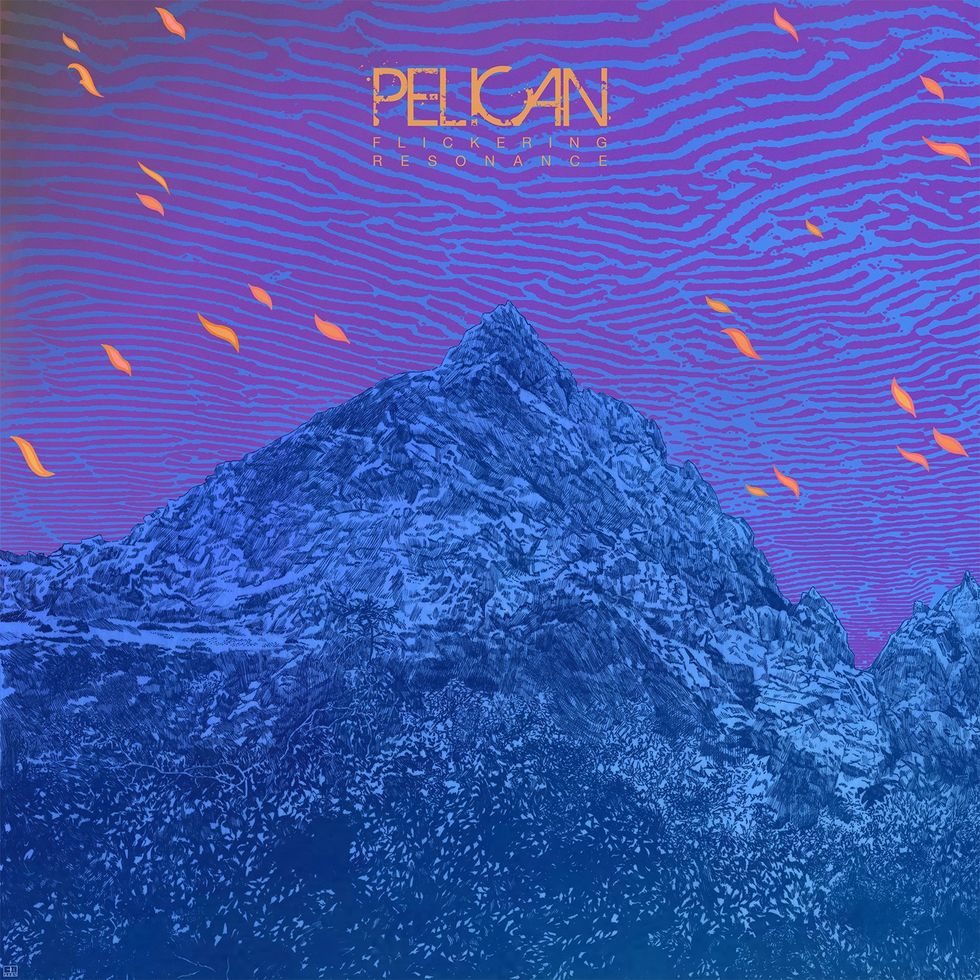
Laurent Schroeder-Lebec’s Gear
Guitar
- 1981 Gibson Les Paul Custom
Amp
- Orange Rockerverb 100 MkIII
- Orange PPC412 cab
Effects
- Boss CE-2W Waza Craft Chorus
- Boss RE-2 Space Echo
- Boss TU-3W Waza Craft Chromatic Tuner
- EarthQuaker Devices Hizumitas Fuzz
- JHS Kodiak Tremolo
- Orange Two Stroke Boost and Equalizer
- Strymon blueSky V2 Reverb
- Strymon Brigadier dBucket Delay
Strings and Picks
- D’Addario EXL158 XL Nickel Wound Electric Baritone (.013–.062)
- Jim Dunlop USA Gator Grip Standard (1.5 mm)
When he went to record, Schroeder-Lebec says he was attached to his Orange Rockerverb, but he curiously determined that it probably wouldn’t work in the studio. “I thought that it might get too murky at times,” he admits. “We tried a bunch of stuff and Sanford and Trevor were like, ‘It needs to be the Orange. That’s the best sounding one.’ We filled out some of the frequencies with a Triple Rectifier that was adjusted to a low-gain setting and went between the two at varying levels.”
The guitar parts in Pelican songs are orchestrated more like conversations than distinct lead and rhythm roles. At times, Schroeder-Lebec says he will gravitate to foundational things, but what he enjoys most about the band, since returning after a long hiatus, is their openness with each other. “For me, it’s a sign of personal maturity not being super-attached to your awesome mega riff,” he attests. “And that is born of Trevor and I relating [to each other], and then Brian getting into the mix as a bass player.” He says open lines of communication end up informing intricacies within the songs, like picking patterns, especially when deciding if they are playing upstrokes or downstrokes, for example. “Even in the scheme of being instrumental, with as much slowness as there is, and repetition, and the wall of sound, there’s also nuance. The way the riffs are structured, they’re like interlocking pieces of the grander puzzle that I hope translate to the listener.”
“For me, it’s a sign of personal maturity not being super-attached to your awesome mega riff.” —Laurent Schroeder-Lebec
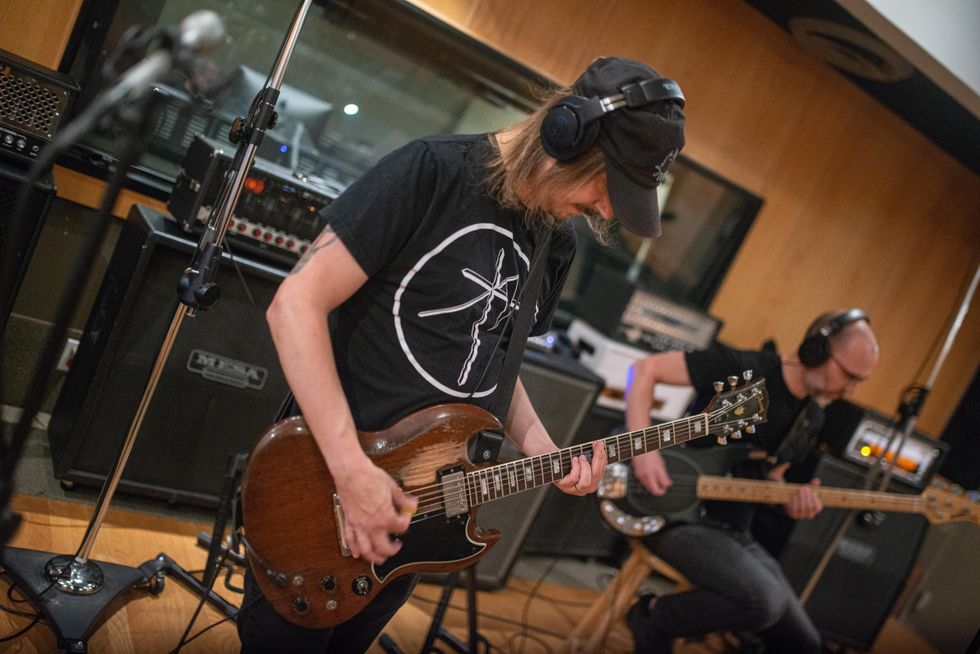
Shelley de Brauw and Schroeder-Lebec gravitate to different tonalities instinctually and find that they are surprisingly complementary of each other. “Trevor and I have known each other for a very long time, and friendship is a key component to the building blocks,” says Schroeder-Lebec. “It’s not infused with conversations like, ‘Hey I’m going to boost my mids,’ or anything technical like that, but we both want each other’s parts to be present, audible, and focused.” He recounts a funny anecdote from Russian Circles’ guitarist Mike Sullivan, with whom they toured recently. “Mike was watching us, and was like, ‘When I hear each of you individually, I’m like, how do these two guitars fit?’ They’re just such different ranges and when you hear the two together, it becomes this tapestry where everything hangs harmonically.”
Channeling all of that sonic 6-string ferocity into live shows means lugging heavy 4x12 cabs and guitar heads to gigs and rocking the same setup that they’ve used since the beginning. No in-ears, modeling amps, or plugins for Pelican. “We need the air at our backs, and we need to feel the sound waves,” attests Shelley de Brauw. “The physical sensation plays a huge part in what the band is about.” Their volume has crept down over the years because they’ve been in pursuit of clarity, and hearing each other on stage has become paramount. “In the beginning, it was just turn it up and pound hard, and it worked,” remembers Schroeder-Lebec. “But we want to play with each other. That’s the goal now and we’re hoping that the combined effort is relatable for people coming to see the show.”
YouTube It
Pelican deliver a crushing take on “Cascading Crescent” from Flickering Resonance.


